

Art & Culture Travel Blog
History of travelling: how people started to travel.
- Tea Gudek Šnajdar
- Cultural Tourism

Although we often have a feeling like people are travelling for the last few decades only, the truth is – people are travelling for centuries. Old Romans were travelling to relax in their Mediterranean villas. At the same time, people in Eastern Asia wandered for cultural experiences. I’ve got so fascinated with the history of travelling, that I did my own little research on how people started to travel. And here is what I’ve learned.
History of travelling
I was always curious about the reason people started to travel. Was it for pure leisure? To relax? Or to learn about new cultures, and find themselves along the way?
I wanted to chaise the reason all the way to its source – to the first travellers. And hopped to find out what was the initial motivation for people to travel.
According to linguists, the word ‘travel’ was first used in the 14th century. However, people started to travel much earlier.
While looking at the history of travelling and the reasons people started to travel, I wanted to distinguish the difference between travellers and explorers. Most of the time, when thinking about travel in history, people like Marco Polo or Christopher Columbus are coming to mind. However, they weren’t really travellers in a modern sense. They were explorers and researchers. So, to really learn about how people started to travel, I wanted to focus on ordinary people. Travellers like you and me, if you wish.
Romans and their roads
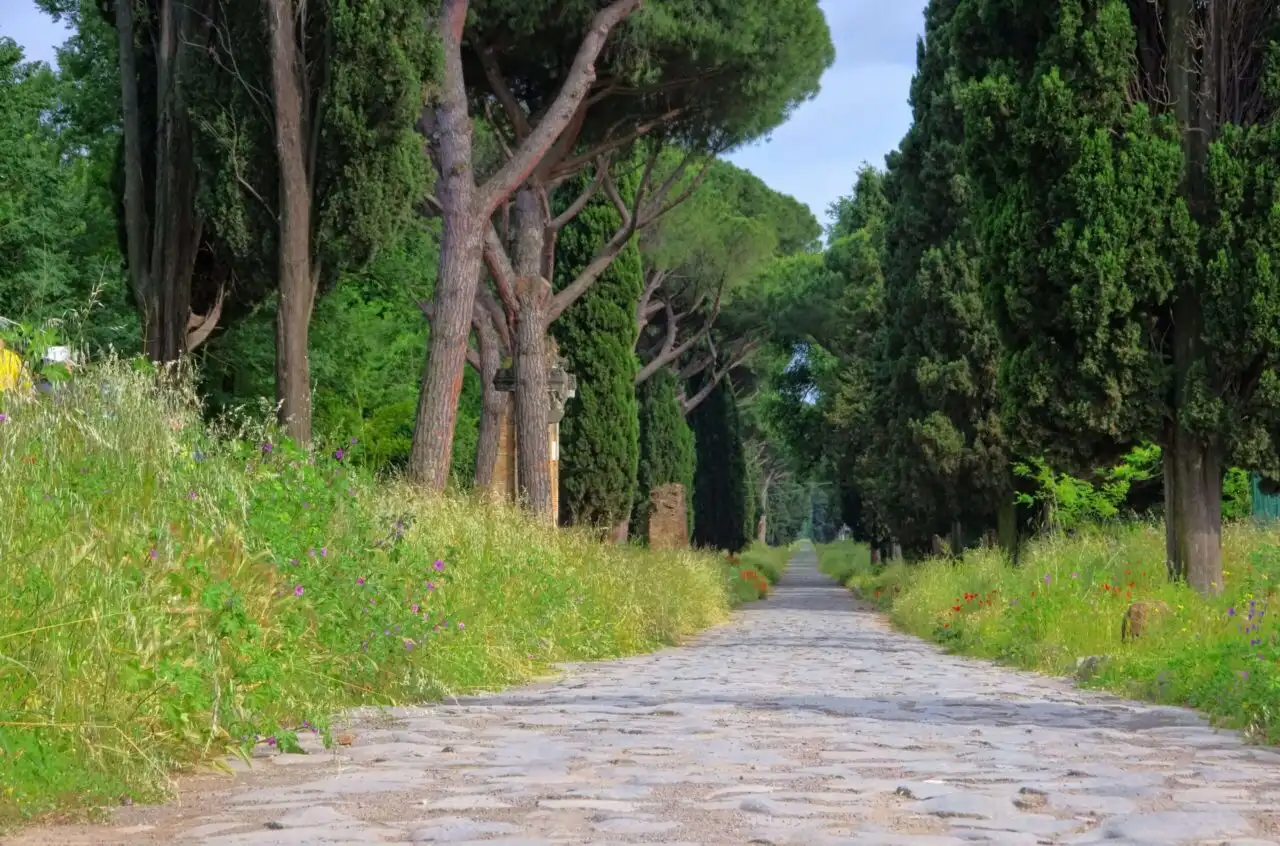
First people who started to travel for enjoyment only were, I’m sure you won’t be surprised, old Romans. Wealthy Romans would often go to their summer villas. And it was purely for leisure. They could, of course, start doing that because they invented something quite crucial for travelling – roads. Well developed network of roads was the reason they could travel safely and quickly.
However, there is another reason that motivated people in Antiquity to travel. And I was quite amazed when I learned about it.
It was a desire to learn. They believed travelling is an excellent way to learn about other cultures, by observing their art, architecture and listening to their languages.
Sounds familiar? It seems like Romans were the first culture tourists.
⤷ Read more : 20 Archaeological sites you have to visit in Europe
Travelling during the Middle Ages
It may come by surprise, but people started to wander more during the Middle Ages. And most of those journeys were pilgrimages.
Religion was the centre of life back in the Middle Ages. And the only things that connected this world with the saints people were worshipping, were the relics of saints. Pilgrims would often travel to another part of the country, or even Europe to visit some of the sacred places.
The most popular destinations for all those pilgrims was Santiago de Compostela, located in northwest Spain. People would travel for thousands of kilometres to reach it. To make a journey a bit easier for them, and to earn money from the newly developed tourism, many guest houses opened along the way. Pilgrims would often visit different towns and churches on their way, and while earning a ticket to heaven, do some sightseeing, as well.
Wealthy people were travelling in the caravans or by using the waterways. What’s changing in the Middle Ages was that travel wasn’t reserved only for the rich anymore. Lower classes are starting to travel, as well. They were travelling on foot, sleeping next to the roads or at some affordable accommodations. And were motivated by religious purposes.
⤷ TIP : You can still find many of those old pilgrim’s routes in Europe. When in old parts of the cities (especially in Belgium and the Netherlands ), look for the scallop shells on the roads. They will lead you to the local Saint-Jacob’s churches. Places dedicated to that saint were always linked to pilgrims and served as stops on their long journeys. In some cities, like in Antwerp , you can follow the scallop shell trails even today.
Below you can see one of the scallop shells on a street and Saint-Jacques Church in Tournai , Belgium.

Grand Tours of the 17th century
More impoverished people continued to travel for religious reasons during the following centuries. However, a new way of travelling appeared among wealthy people in Europe.
Grand tours are becoming quite fashionable among the young aristocrats at the beginning of the 17th century. As a part of their education (hmmm… culture tourists, again?) they would go on a long journey during which they were visiting famous European cities. Such as London , Paris , Rome or Venice, and were learning about their art, history and architecture.
Later on, those grand tours became more structured, and they were following precisely the same route. Often, young students would be accompanied by an educational tutor. And just to make the things easier for them, they were allowed to have their servants with them, too.
One of those young aristocrats was a young emperor, Peter the Great of Russia. He travelled around western Europe and has spent a significant amount of his time in the Netherlands. The architecture of Amsterdam and other Dutch cities definitely inspired a layout of the new city he has built – Saint Petersburg . So, travelling definitely remains an essential part of education since Roman times.
⤷ Read more : 15 Best museums in Europe you have to visit this year
The railway system and beginning of modern travel in the 19th century

Before the railway system was invented, people mostly travelled on foot (budget travel) or by water (the first-class travel at that time). However, when in the 1840s, an extensive network of railways was built, people started to travel for fun.
Mid-19th century definitely marks a real beginning of modern tourism. It’s the time when the middle class started to grow. And they have found a way to travel easily around Europe.
It’s coming by no surprise that the first travel agency, founded by Thomas Cook in England, was established at that time, too. He was using recently developed trains together with a network of hotels to organise his first group trips.
⤷ Read more : The most interesting European myths and legends
History of travelling in the 20th century
Since then, things started to move quickly. With the development of transportation, travelling became much more accessible. Dutch ships would need around a year to travel from Amsterdam to Indonesia. Today, for the same trip, we need less than a day on a plane.
After the Second World War, with the rise of air travel, people started to travel more and more. And with the internet and all the cool apps we have on our smartphones, it’s easier than ever to move and navigate your way in a new country. Mass tourism developed in the 1960s. But, with the new millennium, we started to face the over-tourism.
We can be anywhere in the world in less than two days. And although it’s a great privilege of our time, it also bears some responsibilities. However, maybe the key is to learn from history again and do what old Romans did so well. Travel to learn, explore local history and art, and be true culture tourists.
History of Travelling , How people started to travel , Travel
Academia.edu no longer supports Internet Explorer.
To browse Academia.edu and the wider internet faster and more securely, please take a few seconds to upgrade your browser .
Enter the email address you signed up with and we'll email you a reset link.
- We're Hiring!
- Help Center

The Origin and Meaning of Tourism: Etymological Study

On the paper
Related Papers
CHAUVET Arnaud
The conventional view of tourism's past is dominated by the history of western cultural experience. Tourism starts with the wealthy, with images of prestigious visits to spas and seaside resorts, Grand Tours and the activities of business entrepreneurs such as Thomas Cook, before it begins to filter down the social ladder. This paper argues that more attention should be paid to tourism's past in non-western societies and cultures and to the more ordinary and routine practices of a wider cross-section of the population. It is too simplistic to portray tourism's evolution as a geographical process of diffusion from one or two core areas and a social process of downward movement from the affluent. Reasons for the prevailing image of tourism's past are suggested and several ideas are proposed for broadening research into its history.
Aditya Ranjan
The SAGE International Encyclopedia of Travel & Tourism
Adriaan De Man
Tourism Management
John Towner
Pinky Pawaskar
Zuccina Bartali
Various academic disciplines have repeatedly sought to re-evaluate the significance of tourism. Globalised tourism's so-cio-economic place within the framework of the leisure and holidaying opportunities on offer today has attracted particular attention. Such accounts often leave out the fact that this also has a history. The present article aims to overcome this shortcoming: it seeks to present an overview of the important structures, processes, types and trends of tourism against the background of historical developments. It deals with early forms of travel in the classical world and the Middle Ages, as well as the precursors of modern tourism, Bildungsreisen ("educational journeys") and the middle-class culture of travel. It then examines the boom in mass tourism in the 19th century and the unique expansion of tourism in the 1960s characterised by new forms of holidaying and experience shaped by globalisation.
Annals of Tourism Research
Nelson Graburn
Benjamin Dimowo
International Journal of Sustainable Economies Management
Adrian Nedelcu
Activities have been known as starting points in the tourist field since Antiquity. During the millennia, several practical aspects (as types - trips for recreation, sports, specific for the winter season or at the seaside, in aquatic environments, trips for balneal treatments, trips for discovering architectural, artistic treasures, etc., as participation form - from the individual ones to the mass or group ones, as beneficiary or service provider; with general fittings, but also specific ones), as well as theoretical aspects (the progressive achievement of a proper terminology, in order to be used by many participants in the tourist actions; the elaboration of guides, leaflets, encyclopaedias, maps, etc.); complete territorial analyses of tourist resources (considering the revaluation level, approaching tourism issues in treaties, doctoral theses, etc.); the scientific and methodological content of curricula from tourism schools, departments and faculties; setting the meaning of t...
RELATED PAPERS
RSC Advances
Mohamed Yusuf , MELISSA LOW PHEY PHEY MKK203014
BMC Research Notes
Archivos de Medicina (Manizales)
jose fernando pareja giraldo
IEEE Electron Device Letters
Victor Veliadis
The ANZIAM Journal
Shijun Liao
Wilson Samedo
Plural (São Paulo. Online)
Helga Gahyva
Charlotte Lecluze
Veterinary World
Arfenya Karamyan
Nephrology Dialysis Transplantation
Aikaterini Papagianni
Journal of Alloys and Compounds
Talaat Ahmed Talaat
Colombia Médica
María del Pilar Crespo-Ortiz
BMGN - Low Countries Historical Review
B. de Pater
Revista Brasileira de Ciências Agrárias - Brazilian Journal of Agricultural Sciences
Wanessa Costa
Evandro M Miletto
UCLA文凭证书 加州大学洛杉矶分校文凭证书 klhjkgh
Notes de recherche
Bernard Baudry
Tony Thomas
Journal of Information Engineering and Applications
Mujtaba Zaidi
Computers & Structures
RELATED TOPICS
- We're Hiring!
- Help Center
- Find new research papers in:
- Health Sciences
- Earth Sciences
- Cognitive Science
- Mathematics
- Computer Science
- Academia ©2024

“A good traveler has no fixed plans, and is not intent on arriving.”
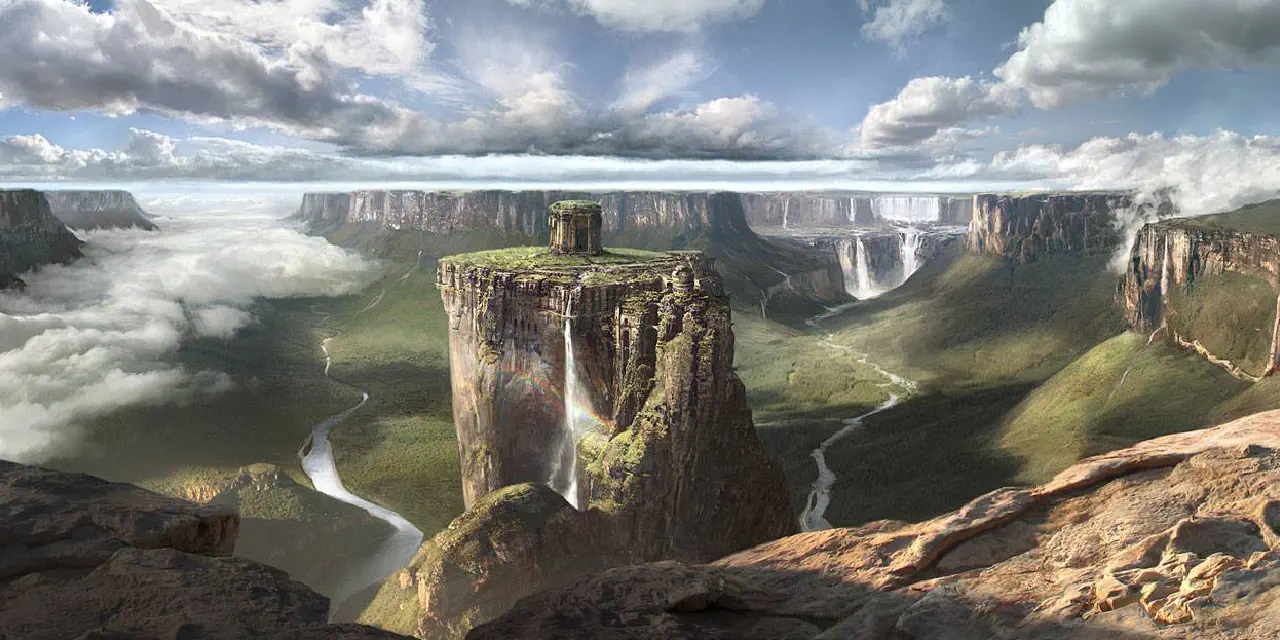
What Is the Etymological Origin of the Word 'Travel'?

The image above was possibly inspired by "Noel Kempff Mercado National Park," which was itself inspiration for Arthur Conan Doyle's book, 'The Lost World.'
Noel Kempff Mercado National Park
"The Park is dominated by a large tableland of 7000 sq km, the Bolivian side of which is Serrania Huanchaca, and the Brazilian side is Sererania Ricardo Franco. The intervening Rio Verde marks the national boundary. The tableland is bounded by precipitous cliffs, 200 to 700 metres in height. The rocks of the tableland comprise Proterozoic sandstones, deposited around 1 billion years ago, intruded by a tholeiitic sill/dyke complex. These overlie an older basement of granites and metamorphic rocks which crop out over the Amazonic plain. The surface of the tableland is overlain by Cretaceous sandstones, and there are laterites and siliceous duricrusts which mark stages of Tertiary uplift and peneplanation.[8]
The Huanchaca Plateau within the park is 600-900 m above sea level and is composed of Precambrian sandstone and quartzite of the Brazilian Shield."
~ Wikipedia
Getting Where You Want To Go Easily
Travelling today is not only cheap, but also efficient thanks to modern aerospace technologies like the Airbus A350-900, Airbus A340-600, Boeing 777-300ER, and Boeing 747-8.
Getting around however, was historically not so easy to do. The word travel is originally derived from the word 'torture.'
" Travel and travail are doublets - that is to say, they have a common ancestor, but have split into separate words. Their ultimate source is medieval Latin trepalium, a term for an instrument of torture made of three sharp stakes. This was a compound noun formed from Latin tres 'three' and palus 'stake' (source of English pale ). From it was formed a verb trepaliare 'torture on the trepalium, ' hence generally 'torture.' This passed into Old French as travailler, where its reflexive use 'put oneself to pain or trouble' evolved to 'work hard.' Its noun derivative travail 'painful effort, hard work' was borrowed by English as travail, and this quickly developed a new sense, 'journey' (presumably from the notion of a 'wearisome journey'), which came to be distinguished by the spelling travel. "
~ John Ayto, "Dictionary of Word Origins"
Featured Posts

Achieving Alignment Through Communication

Developing Cognitive Ambidexterity

Seventeen Secrets to Living Your Best Life in 2024

Characteristics of a Winner
Similar Posts

What Is the Etymological Origin of the Word 'Gratitude'?

What Is the Etymological Origin of the Word 'Algorithm'?

What Is the Etymological Origin of the Word 'Thing'?
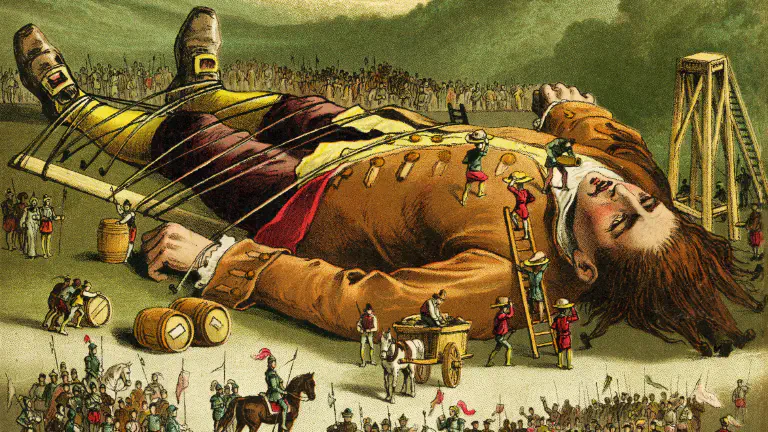
What Is the Etymological Origin of the Word 'Large'?

What Is the Etymological Origin of the Word 'Jean'?

What Is the Etymological Origin of the Word 'Pants?'
Featured Vimeos

Featured Playlists
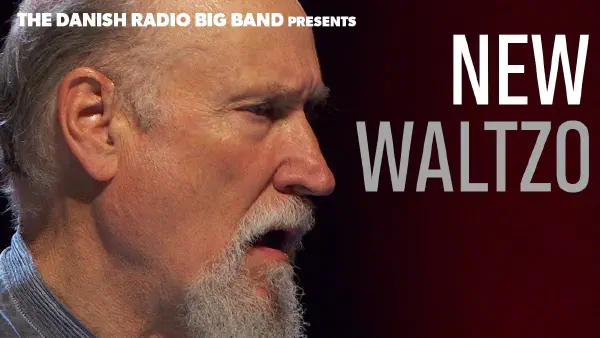
Recent Posts

What Is the Etymological Origin of the Word 'Start'?
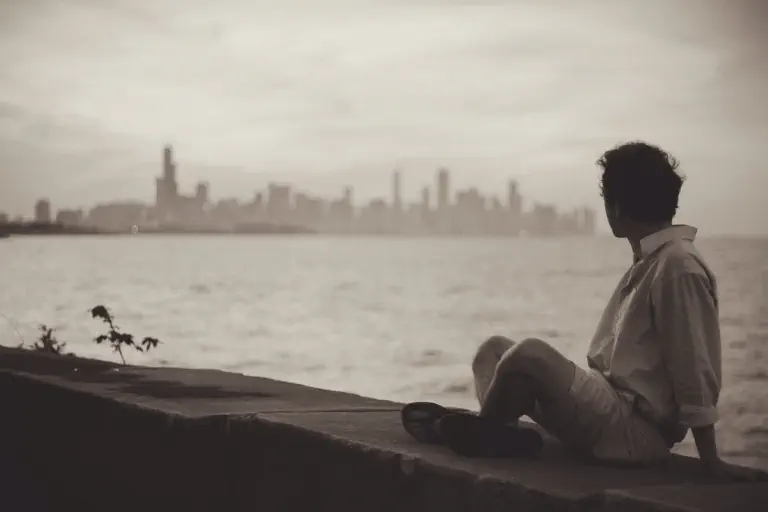
What Is the Etymological Origin of the Word 'Appraisal'?

What Is the Etymological Origin of the Word 'November'?

What Is the Etymological Origin of the Word 'Rush'?
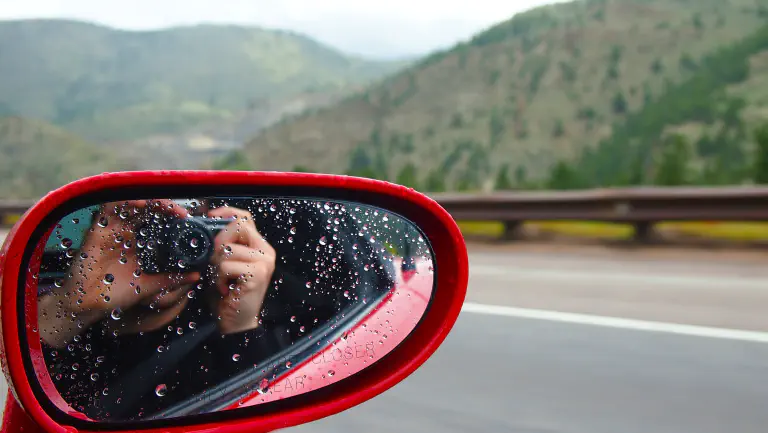
What Is the Etymological Origin of the Word 'Respect'?

What Is the Etymological Origin of the Word 'Team'?

Origin of Travel

The origin of the word “travel” is most likely lost to history. The term “travel” may originate from the Old French word travail . [3] According to the Merriam Webster dictionary, the first known use of the word travel was in the 14th century. It also states that the word comes from Middle English travailen , travelen (which means to torment, labor, strive, journey) and earlier from Old French travailler (which means to work strenuously, toil). In English we still occasionally use the words travail and travails , which mean struggle. According to Simon Winchester in his book The Best Travelers’ Tales (2004), the words travel and travail both share an even more ancient root: a Roman instrument of torture called the tripalium (in Latin it means “three stakes”, as in to impale). This link reflects the extreme difficulty of travel in ancient times. Also note the torturous connotation of the word “travailler.” Today, travel may or may not be much easier depending upon the destination you choose (i.e., Mt. Everest , the Amazon rainforest ), how you plan to get there ( tour bus , cruise ship , or oxcart ), and whether or not you decide to “rough it (see extreme tourism and adventure travel ). “There’s a big difference between simply being a tourist and being a true world traveler,” notes travel writer Michael Kasum.
Join Us On YouTube!
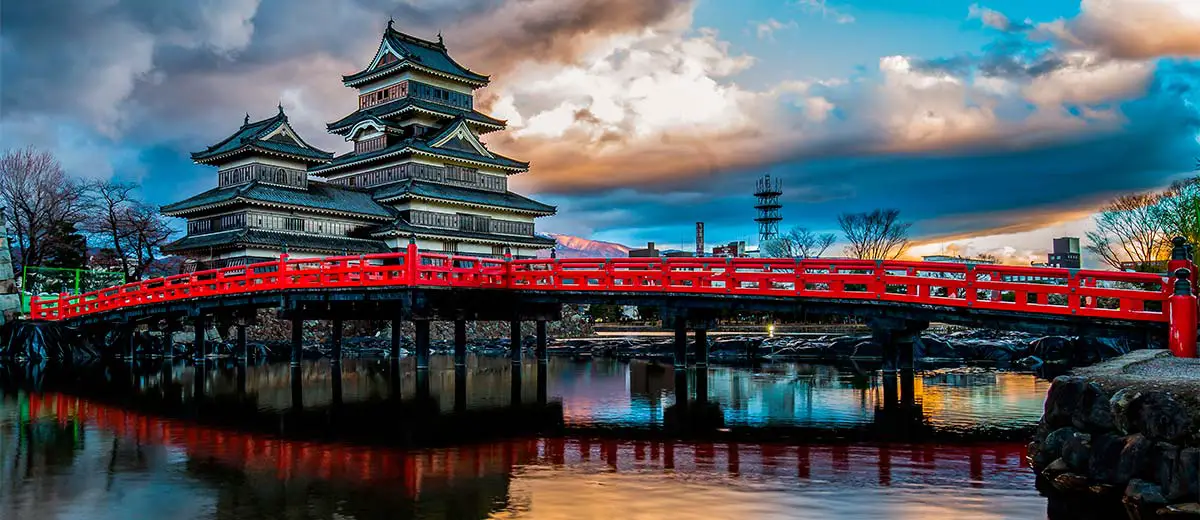
Matsumoto Castle, Nagano, Japan
A Brief History of Travel and Tourism
Utilizing the widest definition of the word, human beings have been travelling since the dawn of time. No matter one’s beliefs about the creation of humans, everyone can agree our species began in some single locale, likely Africa or the Middle East , and ‘travelled’ outwards, settling new lands. However, most of this ‘travel’ was done out of necessity and war, often without the intent of return. It wouldn’t be until Antiquity, or the glory days of the Greek and Roman empires, that tourism, or leisure travel, would be introduced.
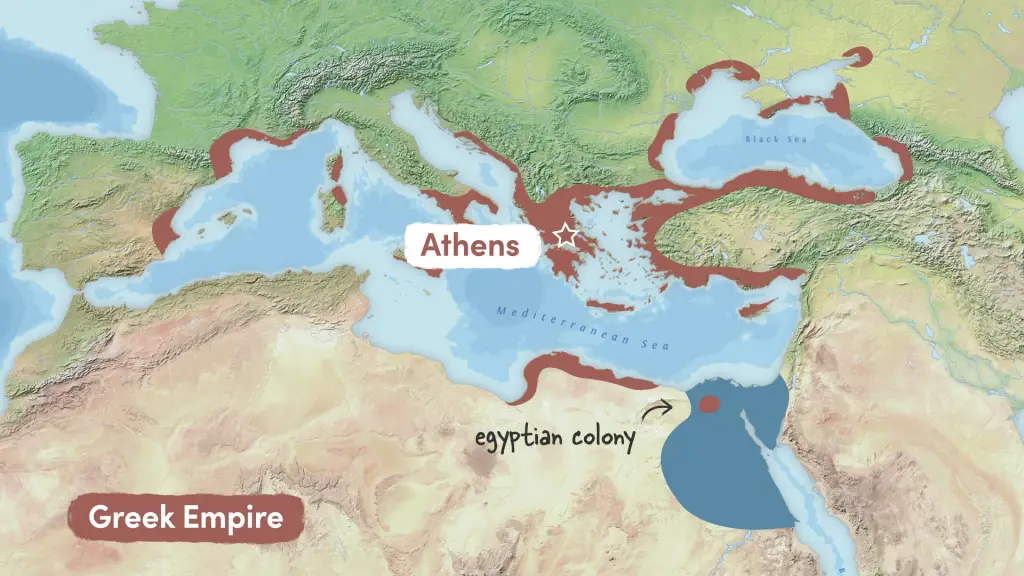
Aristocratic Tourism
In those days, tourism was a privilege almost entirely confined to the wealthy, who travelled largely for cultural exploration. One has to remember, the Greek and Roman upper classes were people who prided themselves on artistic, scientific, and philosophical pursuits. It follows, then, that these early travellers largely sought to learn the arts, languages, and cultures of their destinations.

Soon enough, travelling for leisure’s sake began to gain popularity; from the Roman Empire arises some of the earliest examples of travel resorts and spas in the world. Though they documented their experiences most thoroughly, the elite Europeans were not the only ones travelling in ancient times. In eastern Asia , it was popular for nobles to travel across the countryside for the religious and cultural experience it offered, oftentimes stopping at temples and sacred sites during their travels.
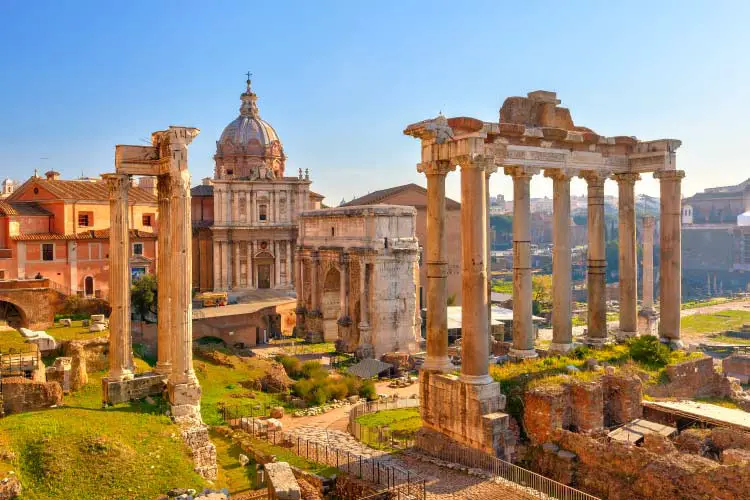
Religious Tourism
During the Middle Ages, travel took on a new meaning. Although leisurely travel was still reserved for the upper class, it became more and more common for members of the upper and even lower classes to embark on pilgrimages. Most of the major religions at the time, including the Islamic, Judaic, and Christian traditions, encouraged their practitioners to conduct pilgrimages.
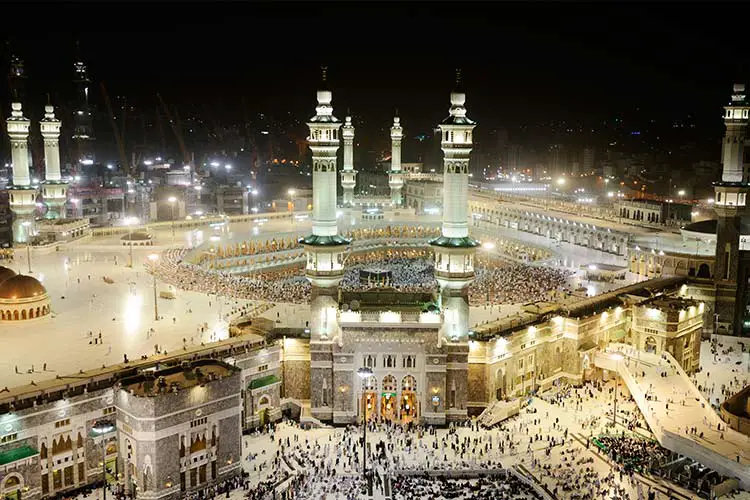
Largely unaided by technology, most of these journeys were done on foot, often occasionally with a beast of burden to carry supplies. The wealthy were able to afford other forms of travel including horseback and ship. Furthermore, the Middle Ages saw the emergence of connected shipping routes. As ports grew, travel opportunities increased, and the dock was typically the start of any long-distance travel during the Middle Ages.
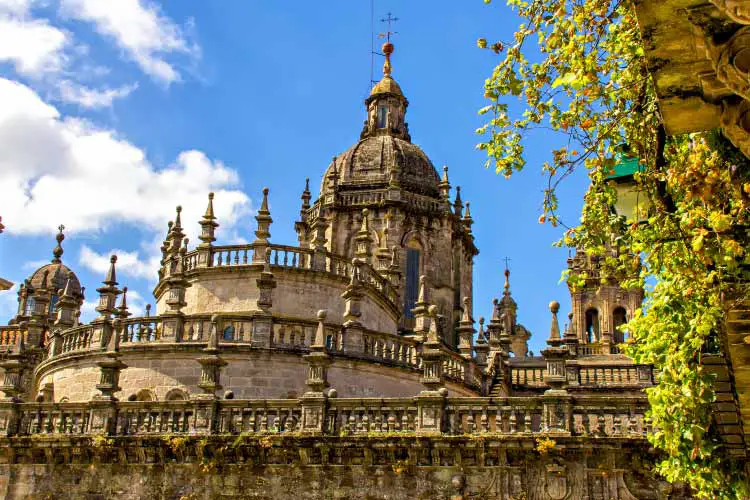
The Grand Tour
Travel continued to exist in this way for some time: the rich travelled primarily for cultural and leisure reasons, while the poor travelled largely for religious reasons, if at all. The next major development travel underwent was the establishment of the Grand Tour. Undertaken by the elite men of Western and Northern European countries , the Grand Tour took young travellers across Europe in a “rite of passage” meant to educate the wealthy after they finished their education but before adulthood. Historians cite this tradition as the origin of the modern tourism industry and indicate that the tradition had become well established in European culture by the 1660s.
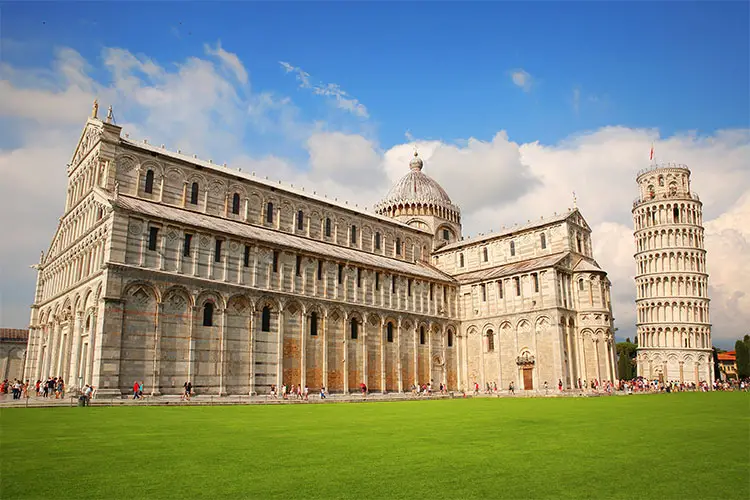
Like many traditions, the Grand Tour eventually developed a rigid structure. Tourists were expected to follow a set itinerary and travelled with a tutor. The Grand Tour typically began in England, moved south through France into Switzerland and Italy. After spending a few months in Italy, the traveller and his tutor moved upwards through Germany and into Holland before returning to England. These trips utilized the most advanced travel technology of the day, including ships and collapsable coaches, and it wasn’t entirely uncommon for the traveller and tutor to be waited on by a handful of servants.

Tourism For The Masses
The Grand Tour remained a popular cultural phenomenon amongst the rich until the 1840s, which saw the advent of the first widespread railway system across system Europe. Immediately, this innovation opened the possibility of embarking on a Grand Tour to the middle classes, and soon it became more popular for middle and even working-class citizens to travel for leisure.
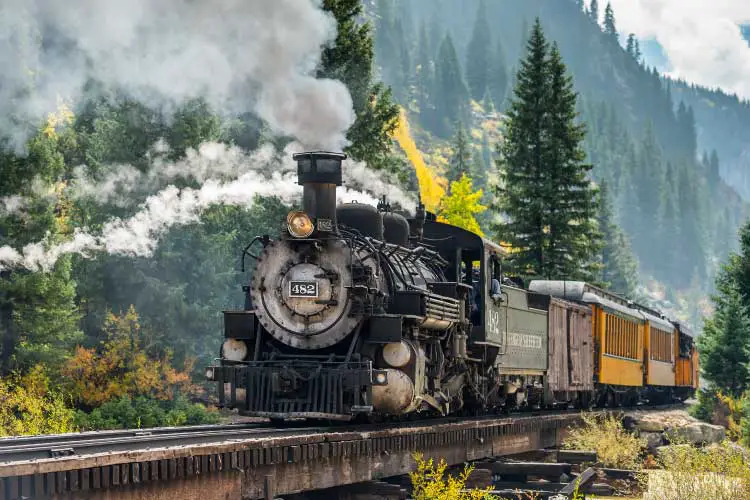
More importantly, the implementation of railway systems across Europe and the United States positioned the world for the Industrial Revolution. The United Kingdom is often cited as the first country to actively promote leisure time to its industrial class, and as a result, the country had a strong impact on the early development of the tourism industry. One hugely influential player in the history of travel and tourism was Englishmen Thomas Cook, who established the first-ever travel agency to provide ‘inclusive individual travel’ in the 1840s.
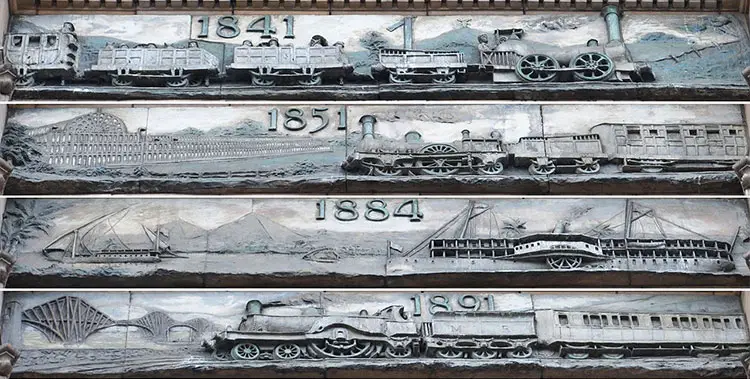
This means that travellers move independently in their travels, but all the food, lodging, and travel expenses were set at a fixed price for a predetermined length of time. This allowed travellers to take any route they fancied throughout Europe without having to ascertain food or lodging ahead of time. This fact, coupled with the falling ticket prices of railways, meant that long-distance travel was dramatically cheaper and faster than ever before. This not only further lowered the barriers to leisure travel but also drastically increased the incidences of business-related travel. As one can imagine, Cook’s Tours became massively popular, and the company remains successful today as the Thomas Cook Group.
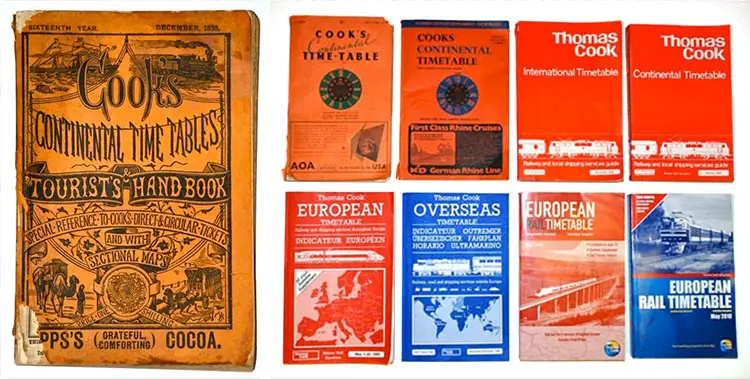
In short, the introduction of a widespread railway system gifted a massive boost to the tourism industry; this boon would largely reflect that the aeroplane would have in the early-20th century. More so than any other technological development, the aeroplane opened the floodgates of mass international tourism. Behemoth multinational airlines such as Pan Am, Delta, and American Airlines arose during the 1900s, and suddenly the physical boundaries between cities were rendered useless. It has become possible for a traveller to get nearly anywhere on the globe in less than 48 hours, for a price that most middle and working-class members can achieve.
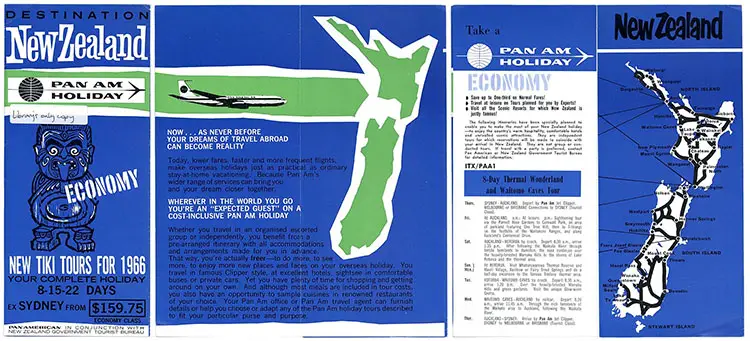
Today, travel stands as one of the most economically important leisure activities in the world. The tourism market is so large that it has split into an astounding number of niche markets, including ecotourism , backpacking, and historical tourism. As of the writing of this article, there have even been a handful of trips into orbit around Earth branded as “space tourism”, a new and exciting chapter in the history of travel and tourism. The story of tourism displays a remarkable connection to the technology that makes travel possible. Transportation innovations like the train and aeroplane have eliminated the difficulties and lowered the costs of long-distance travel, and planet Earth has truly become a smaller place because of it.
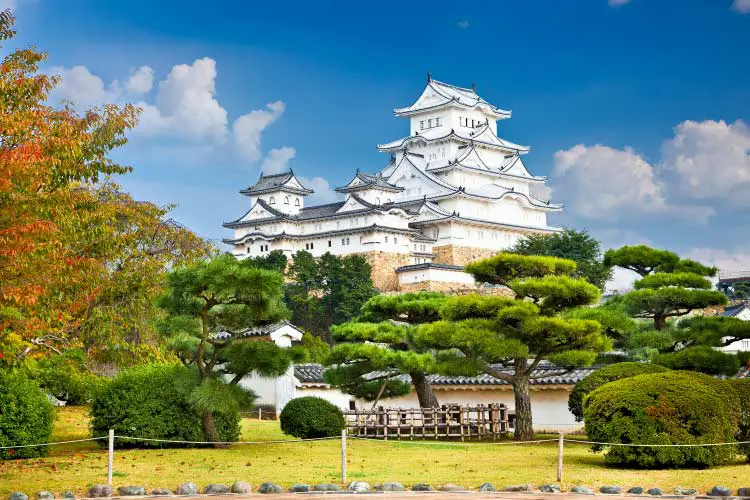
© Textbook Travel 2024 ⋅ View Privacy Policy


A (Short) History Of Travel Writing
Posted on Last updated: February 5, 2023
In this short history of travel writing, we will look at the different types of reporting about travel throughout the ages.
If you’re looking for a book about travel in a bookshop or library, you better take the rest of the day, well perhaps even better the week… month, or even rest of the year off! There are just so many!
The amount of writers reporting about the different landscapes and food they tasted in foreign destinations, books with history lessons about certain places and personal narratives about a person’s excitement and struggles of navigating through unknown territories and meeting foreign people are endless.
TYPES OF TRAVEL WRITING
Early travel literature in asia, travel writing during classic and medieval times, who was the first travel writer, discovering new worlds, why we like to write and read about travelling, famous travel writing, studying travel literature, modern day travel writing, add to your vision board, travel without leaving home, which book to read, want to be a travel blogger, our favourite travel journals, our favourite travel notebook covers, travel journals for kids, discover unique travel gear & gifts, travel writing history.

When we’re talking about travel writing, there are a couple of distinctions to be made. There are:
- travelogues (journal/itinerary style, actual reports about someone’s trip)
- travel stories (a realistic narration about a journey, meant for a wider audience and usually with a certain literary value to it)
- and travel guides (publication with practical information and tips/advice about a certain destination, meant for people that want to visit that place).
With old stories, it’s hard to distinguish between a travel story or a travelogue. This is because we don’t know the accuracy of the information and motif of the story. Most of the time, it is also not known who commissioned the story in the first place.
That said, in all travel writing, the focus lies on accounts of real or imaginary places. It may range from documentary to the evocative, from literary to journalistic and from humorous to serious.
You can find travel writing in books, magazines and of nowadays also online. What different types of travel writing are your favourite to read?

You don’t always need to be physically on the road to enjoy the beauty of destinations from all around the world!
From vintage travel posters to beautifully displayed souvenirs and home decor items inspired by your favourite places and from travel journals and crafts to exploring world recipes, music and dance.
With our creative articles you’ll get some fresh ideas on how to bring the world closer to the comforts of your own home.
In China , travel literature became popular during the Song Dynasty (960-1279). Under the name of ‘ Youji Wenxue ‘ (‘ Travel Record Literature ‘), authors such as Fan Chengda and Xu Xiake incorporated geographical and topographical information into their writing.
Poet and statesman Su Shi wrote ‘ Record Of Stone Bell Mountain ‘ and made a philosophical and moral argument as its central purpose.
In Japan , there are also many personal reports from travellers sharing their experiences and interesting encounters.
Examples include the ‘ Sjōrai Moluroku ‘ (804) by author Kūkai and the ‘ Tosa Nikki ‘ (‘ Tosa Diary’ ) by Ki no Tsurayuki (early 10th century), which was found revolutionary because it featured a female narrator.
Haiku poet Matsuo Bashō wrote the story ‘ Oku no Hosomitsji ‘ (‘ The narrow road to the Deep North’ ) in the second half of the 17th century. The work included the journey, places visited and the author’s personal experience.

Throughout the history of travel writing, you might not categorize some of the historical tales as travel stories. But how about the famous travelogue ‘ Odysseia ‘ (‘ Odysey ‘) from 8B.C. by Homer? This poem recounted Greek hero Odysseus’ long journey home after the fall of Troy.
The Latin work ‘ Commentarii dé bello Gallico ‘ by Julius Caesar reported his journey during the Gallic War.
Greek writer Xenophone wrote ‘Anabasis’ around 431-355 BC. It was about the expedition of a Persian prince against his brother, King Artaxerxes II and the Greek troops travels through Asia back home to Greece. In Medieval works, it showed that people had very little knowledge about the world around them.
Stories were usually a colourful mix of facts and impossible events. They were mostly quests (for the Holy Grail or for personal development) or texts with a mainly Christian/spiritual focus. You can’t really call them travel stories, as they didn’t tell much about the actual environment.

It’s hard to say with 100% accuracy, but often the Greek author Herodotus is consider the first real ‘travel writer’. He travelled all over the eastern Mediterranean to research his monumental Histories , written between 450 and 420 BC.
The Histories serves as a record of the ancient traditions, politics, geography, and clashes of various cultures that were known in Greece, Western Asia and Northern Africa at that time.

After the crusades, new stories and information reached the people. They started to realize that there was a whole other world outside their own. The history of travel literature evolved even more at this point.
There came a shift in stories type, as there was much curiosity about explorations and voyages to unknown destinations.
Travel was a necessity at those times. That is why most travel stories were purely intended to inform about the different nature and culture of inhabitants they met. And the best ways in which to approach them. There were also a lot of military explorations that informed more about strategic issues.
A well-known travel writer in those times was Marco Polo from Italy , who wrote (or let someone else write) about a Venetian traveller on his way to China and the Mongol Empire in the work ‘ Il milione ‘ (‘ The million ‘, 1298). This work is seen as a truthful report of things, complemented with (not always correct) information he collected through hearsay.

In 1336, someone did a bit more than just jotting down facts about his destination. Italian poet and humanist Petrarch described his experiences about climbing mount Ventoux and –more importantly- his satisfaction about reaching the top. He also wrote about his travel companions and even related his experience to his own moral development in life, as were it a pilgrimage.
More and more people after Petrarch found a new interest in writing about their travels in a more personal way.
World traveller Ibn Battuta from Morocco wrote in 1355 the work ‘ Rihla ‘ (‘ The Journey ‘), with an original title that translates as: ‘ A Gift to Those Who Contemplate the Wonders of Cities and the Marvels of Travelling ‘.
Halfway through the 15 th century, Historicus Gilles le Bouvier from France wrote in a book his opinion about why people should travel and write about it: ‘ Because many people of diverse nations and countries delight and take please, as I have done in times past, in seeing the world and things therein, and also because many wish to know without going there, and others wish to see, go and travel, I have begun this little book .’

The Travel Tester loves to review books that teach you something about yourself or the world around us.
From travel guides and stories to books about business and self-development and from cultural stories to cook books from kitchens around the world… if it looks interesting to us, we’ll test it!
No matter where you’re going, with our reviews you’ll know exactly what to read next!
Continuing this history of travel writing through ages, in the 18 th century travel writing was known under the name ‘ Book of Travels ‘. Usually these were maritime journals – and the people devoured them. British James Cook’s diaries (1784) reached the status of a modern day international best-seller. Along with true stories, imaginary travel stories started to appear.
Many of them were actually based on factual journeys. You might have heard of Joseph Conrad’s ‘ Heart of Darkeness ‘, Daniel Defoe’s ‘ Robins on Crusoe’ , Jonathan Swift’s ‘Gulliver’s Travels’ or Jules Vernes, ‘The journey around the world in 80 days’ .
Charles Darwin wrote his famous account of the journey of the HMS Beagle in the 19 th century. It was a work at the intersection of science, natural history and travel. Other famous authors from his time, that also wrote travel stories where: Hans Christian Andersen, Charles Dickens and Mark Twain.

There have been many studies about travel writing and travel literature.
They include themes such as: interwar travel writing as escapism, the primitivist presentation of foreign cultures, the psychological correlatives of travel, the role of gender in travel and travel writing, explorations of the political functions of travel, studies about the function of language in travel and travel writing, cultural diversity, globalization and migration.
The first international travel writing conference was titled ‘ Snapshots from Abroad ‘ and was organized by Donald Ross at the University of Minnesota in the USA 1997. It attracted many scholars and led to the foundation of the ‘ International Society for Travel Writing ‘.

Travel writing in current times is quite a broad theme. From journal-type stories to literary works in which style and structure are more important.
Some of the most popular travel writers from the 20 th and 21 st century are (amongst others): Bill Bryson , Paul Theroux, Pico Iyer, Tim Cahill, Stanley Stewart, Kira Salak, Douglas Adams, Anthony Sattin, Ryszard Kapuscinski, Bruce Chatwin and Rory MacLean.
These days, we all know the travel blog as another form of travel writing.
The first online travel blog was posted by Jeff Greenwald on the ‘ Global Network Navigator ‘ in 1993. He described his journey around the world and later turned the pieces into a book.
TIP! Read this funny travel blog of how things went south for me once at Schiphol Airport (but all was ok in the end)…

There is a lot that goes into running a profitable blog and there’s so much that goes on behind the scenes than you might not realize at first.
I’ve been blogging since 2006 and have a ton of tips to share! From brainstorming ideas to creating content all year round and from posting on social media to maintaining your website, tracking what’s working, networking at events and eventually working with brands…
As you can see, travel and reporting about our travels has been a source of inspiration for a long time now. Whether it was military officers, missionaries, the early explorers, scientists, pilgrims, migrants or people simply going on a holiday, we love telling others about our adventures!
I hope you enjoyed this short history of travel writing. Do you have an (online) travel journal? Feel free to share it in the comment section. And don’t forget to share this article if you liked it!
PRACTICAL INFO
- The Adventure Book – Original Edition (prompts + scrapbook per country)
- The Adventure Book – Europe Edition (prompts + scrapbook per country)
- The Adventure Book – Ultimate Traveler’s Edition (prompts + scrapbook per country)
- Moleskine Passion Journal Travel (blank paper)
- Moleskine National Geographic Traveller’s Journal (tabbed sections + prompts)
- Moleskine Journey City Notebook – London (pocket)
- Moleskine Journey City Notebook – Paris (pocket)
- Moleskine Journey City Notebook – New York (pocket)
- Moleskine Journey City Notebook – Hong Kong (pocket)
- Duncan & Stone Travel Journal (prompts + scrapbook)
- Everywhere You Go: Guided Travel Journal (prompts)
- Promptly Journals X Kelli Murray (prompts + scrapbook)
- Robrasim Refillable Leather Travelers Notebook (mixed papers + pockets)
- Clever Fox Bucket List Journal (prompts + stickers)
- Clever Fox Camping Journal (prompts + stickers)
- Clever Fox Travel Journal (prompts + stickers)
- Axel & Ash Life’s a Road Trip Journal (prompts)
- Axel & Ash Swept Away by Wanderlust (prompts)
- Field Notes: National Parks Series (pocket, graph paper)
- Bookishly Travel Journals (blank pages)
- Wayfaren Travel Journal (lined paper)
- Oakdene Designs Personalised Motorhome Travel Journal (prompts + scrapbook)
- Oakdene Designs Personalised Travel Journal (prompts + scrapbook)
- Oakdene Designs Personalised Caravan Travel Journal (prompts + scrapbook)
- Oakdene Designs Personalised Wooden Journal (lined pages)
- Oakdene Designs Personalised Hiking Journal (prompts + scrapbook)
- Oakdene Designs Personalised Road Bike Journal (prompts)
- Oakdene Designs Personalised Wooden Adventure Journal (prompts + scrapbook)
- Oakdene Designs Personalised Camping Journal (prompts + scrapbook)
- CamperVanStore Bamboo Travel Journal (lined paper + pen)
- Personalized Monogrammed Leather Travel Journal (blank pages)
- OneLineVoyage Faux Leather Travel Journal (prompts)
- Luckies Scratch Off Travelogue (prompts + scratch maps)
- Letterfolk Trip Passport (pocket + prompts)
- Galen Leather – Leuchtturm1917 Notebook Covers
- Galen Leather – Moleskine Covers
- Galen Leather – Field Notes Covers
- Galen Leather – Traveler’s Notebook Covers
- I Was Here: A Travel Journal for the Curious Minded
- Go!: A Kids’ Interactive Travel Diary and Journal – RED
- Go!: A Kids’ Interactive Travel Diary and Journal – BLUE
- Go!: A Kids’ Interactive Travel Diary and Journal – YELLOW
- Kids’ Travel Specialty Journal
- Lonely Planet Kids My Travel Journal
- Lonely Planet Kids The Travel Activity Book
- The Ultimate Travel Journal For Kids
- Road Trip Activities and Travel Journal for Kids
- Travel Journal for Kids
- Here I Go!: A Kid’s Travel Journal
MORE ABOUT TRAVEL JOURNALLING
- How to Make a Travel Journal ? Tips and Supplies
- How to Write a Travel Journal ? Best Writing Tips
- 65+ Travel Journal Prompts to inspire you
- 10+ Travel Bullet Journal Ideas you’ll love
- Best Bullet Journal Tips
- These Travel Journal Covers will amaze you
- Explorers’ Sketchbooks Review
- A Short History of Travel Writing
- 15 Signs you are born for Travel Writing
- Our Okinawa (Japan) Project Life Album
- Must-Have Travel Scrapbooking Supplies

In The Travel Tester shop, you will find our favourite travel products and original gift ideas.
Whether you’re looking for the best travel gear, gadgets, electronics, packing solutions, clothing, shoes, travel books, health- or beauty products… we’ve made a personal selection for you!
We’ve also included our favourite tech items used to create this blog, as well as material that can help you in your self-development, such as interesting books and courses.

Monday 5th of March 2018
A great synopsis of the fundamentals of travel writing. From the very start one can easily discover a cultural binding through the need of storytelling and sharing. Thank you guys!
Nienke Krook
Friday 6th of April 2018
Glad you liked it Antonios!
HISTORY CHALLENGE: HISTORIC TRAVELLERS | Time Travelling With Kids
Monday 28th of November 2016
[…] For an overview of the history of travel writing, visit: https://thetraveltester.com/a-short-history-of-travel-writing/ […]
Friday 20th of February 2015
Your article is absolutely fascinating Nineke. I came across it whilst researchign a talk I'm giving on the 'Pleasure of Travel Writing' and will certainly recommend it to the audience :-)
Wednesday 25th of February 2015
Thanks so much Zoë! Would have loved to see your talk, will it be online somewhere? Thanks for mentioning me!
LifeInCamelot
Wednesday 6th of February 2013
I enjoyed reading this and am glad I have found you. Welcome to Australia and I look forward to reading more of your stories. I have started my own travel blog - it includes some travelogues (from the past) and some travel stories. I enjoy using humour so love reading other people's sites that are humourous. I also love the feeling of nostalgia your blog has, along with the history of your grandfather.
My blog address is - www.lifeincamelot.wordpress.com
thetraveltester
Hi (sorry couldn't find your name anywhere?), Thanks for your nice comment. I've just left Australia after 2 years and loved living there. Now it's adjusting to (coldcold) Europe :) I am looking forward to reading your blog, thanks for the tip!

- Music & Dance
- TV & Movies
- Food Culture
- Restaurants
- Aromatherapy
- Healthy Living
- Educational
- Life Stories
- Famous People
- Expensive Products
- Product Reviews
- Empires and Kingdoms
- Prehistoric and Early Civilizations
- Pre-Columbian
- Colonial Period
- American Revolution
- Civil War Era
- Civil Rights
- US Presidents
- The Middle East
- People in History
- Statues & Monuments
- Historic Mysteries
- History Questions
- Chinese Mythology
- Japanese Mythology
- Greek Mythology
- Norse Mythology
- Roman Mythology
- African Mythology
- Native American Mythology
- Mythical Creatures
- Superstitions
- Buddhist Mythology
- Christianity
- African Folk
- Paganism & Wicca
- Prayer Beads
A Brief History of Travel

In our modern world, global travel has become so easy that it’s easy to forget that mass tourism is a relatively new occurrence. At least it is for the masses. But why do we travel? And when did travel become ‘a thing’? Have we always been travelling, or is it really just a modern invention?
Today, tourism is a huge industry, supporting millions, perhaps billions of people around the world. From airlines and taxi drivers, to restaurants, hotels and bloggers, tourism plays an integral part in our modern global economy. And this economy has been growing at a staggering rate throughout the 20th and 21st centuries. In 1980 there were just over 280 million tourism arrivals around the globe. By 2018, there were an estimated 1.4 billion tourist arrivals, with the money spent on travel accounting for around 10.4% of global GDP.
But it wasn’t always like this.
Table of Contents
Travel in the Ancient World
For most of human history, travel had been undertaken either as part of exploration or trade. Or, sometimes, both together. Military conquests or the spreading of a religious word have spurred people to reach out across the region to either subjugate or enlighten the neighbours – and on occasion to dominate distant lands.
However, travel for pleasure has always been there in the background, albeit usually for the more fortunate monied classes. In ancient Greece, there are examples of people travelling to watch the original Olympic Games, or to question the Oracle at Delphi. There were also other games less famous than the Olympics which would attract visitors from far and wide. At the time, there was an extensive network of inns across Greece designed for travellers to stay the night, although they were basic by today’s standards with no bathrooms, toilets or catering facilities.
Well-to-do Egyptians too would explore ancient marvels (some of which were ancient even in 1000BCE). The Pyramids and the Acropolis were draws for tourists even in pre-modern times, and those who could afford to visit ancient sites would take time out with their slaves and entourages to go and explore. Visitors came from Greece and Rome to marvel at the scale of the pyramids of Giza, which were the world’s largest man made structures for thousands of years.
But it was perhaps the Romans who first took holidays or vacations in a way that might seem familiar to us today. The nobility of ancient Rome would escape the stifling heat of the city in summer and head to either the cooler hills, or the seaside. Sicily, Capri and the north of Italy were all favourite haunts, although some would even travel as far as Egypt or Greece for these excursions.
In fact the Romans also pioneered the spa holiday, often travelling to find thermal baths for health benefits. Around these spas would spring up additional services including restaurants, gambling dens and even prostitution. Roman travel was made relatively easy by their great network of roads and shipping routes across the territory. However, with the collapse of the Roman Empire, tourism in the Mediterranean took a break for a while.
Ancient Tourism in Asia
The ancient Silk Route is still well known today as a network of paths and shipping lanes leading from China to the Western lands. Although it was clearly a trade network, travellers would have traversed the steppes of central Asia perhaps for enlightenment or other benefits.
Srinagar in Kashmir, northern India holds an interesting example of the possibilities of the age. The city hosts a tomb said to be that of a pilgrim from the Middle East who arrived around 2000 years ago. It is said that the tomb houses the body of Jesus Christ, who survived the crucifixion and fled to India to live a life of quiet contemplation. Although the tomb is officially the resting place of a Muslim preacher called Youza Asaph, the speculation around the Jesus story is still quite strong.
Although this might be controversial for some, even if it isn’t the body of Christ, the fact of the matter is that people did make such a huge journey even in antiquity. This could have been to spread their own gospel, or to study Buddhism (the dominant religion at the time).
China too has a history of classical travellers, such as Hsuan Tsang, born around 607CE. Although it was illegal to travel outside of China around this time, between 627-643, Tsang travelled along the Silk Route, to Samarkand and Tashkent (both in modern Uzbekistan), and eventually visited Benares in India on a Buddhist pilgrimage. He even recorded his travels in a book, Great Tang Records on the Western Regions.
Zheng He is another famous example of a Chinese traveller, although he was more a diplomat acting at the behest of the Emperor of the time. Born in Yunan to a Muslim family, He led expeditions as far afield as the Arabian Peninsula, the Horn of Africa and Sri Lanka. Zheng He bought back many exotic treasures to the emperors including spices, wild animals and minerals and was even rumoured to have reached the American continent and Australia.
His ships were also famous, mainly for being huge. Although time may have blurred the truth, rumours of the time suggest that his flagship was many times bigger than any other wooden ship of the time.
Conquests, Pilgrimages and Persecution
Back in Europe, there was undoubtedly tourism during the middle ages, that is the years between the 5th and 15th century. Much of it would have centered around religious observances, for example pilgrimages to distant temples and the tombs of Saints.
With the conquest of Spain by the Muslims, many would come from as far away as Baghdad or Damascus to enjoy the lifestyle in this lush distant land.
With Muslims so far flung, the pilgrimage to Mecca would have been one of the main reasons for pilgrims to travel huge distances. From Al Andalus (Spain) or Morocco, all the way to Arabia, or even in the case of Zhang He, visiting from China, Mecca was probably one of the biggest destinations for travellers for hundreds of years.
And, with the religious theme being kept, the Crusades inspired a whole generation of European noblemen to head to their own holy land of Jerusalem and Palestine to defend against the invading Muslims. Although the Crusades are illustrated as battles and sieges, in fact there is evidence of some co-existence and even sharing of knowledge.
Moving towards the modern age, with the discovery of America by Europeans in 1492, people began to eye the new world more as a new frontier and the chance for a new beginning. Travel to the Americas was, at first, less about travel and more about escaping persecution, poverty and hardship in Europe.
The 16th, 17th and 18th centuries saw lots of movement, through forced migration such as slavery or displacement as well as colonising Asia, Australia, parts of Africa and the Americas. And with the opening of shipping routes, an increased exposure to foreign cultures through newspapers and books and more awareness of the world around us, a new era was about to begin…
The Birth of Tourism
Tourism as we would recognise it today started around the 17th or 18th century. Well to do Europeans would set off on a Grand Tour of classical cities across the continent, taking in stops in Paris, Vienna, Prague, Florence, Rome, Venice and London, among many others. In this respect, the modern travel trail isn’t quite so modern as it would seem.
Famous poets such as Britain’s Lord Byron spent two years travelling the Mediterranean, enjoying copious amounts of wine and seducing the locals. In-keeping with this style of travel, the Grand Tour tended to be reserved for the nobles and more monied classes. These ‘tourists’ would then return with tall tales of the riches of far off lands and often publish memoirs, poems and other forms of media, a precursor to Instagram posts perhaps?
Arguably, mass tourism as we know it today took shape when Thomas Cook, a British businessman, started organising mass tours from his base in Leicester. At first, his ‘travel agency’ would organise excursions across England. His first, in 1841, was from Leicester in England, to Loughborough, a town just 11 miles away. His next ‘tour’ was to Liverpool, and by 1856 he was organising tours to Scotland, Italy, Egypt and even the United States – surely a milestone in the history of travel and tourism as we know it.
Today, Thomas Cook is still a household brand name in the UK, with the company offering holiday packages across the world.
The Sky is the Limit
Of course, air travel changed everything. From days, or even weeks to reach a destination, suddenly far flung cities were within just a few hours reach.
The first commercial air link, in 1914, was between St Petersburg and Tampa, both in Florida, USA. By 1919, many nations began setting up commercial airlines, some of which are still in operation today. KLM (Royal Dutch Airlines), Czech Airlines, Avianca and Qantas are a few of the founding transcontinental airline companies who are still flying the skies.
Although air travel was slow at first, as anyone who has seen an Indian Jones movie would understand, it was still a lot faster than travelling by boat or train. And, of course, it was expensive. Air travel was the preserve of the rich, and the glamour associated with air travel is still something people come to expect.
Today, of course, budget airlines rule the skies and everyone can fly around the world for what amounts to pocket change. Anyone can fly away for a city break getaway for the weekend, or perhaps to live as a digital nomad in a more exotic city. Ryanair in Europe, AirAsia in Asia and JetBlue of the USA make travel much more accessible for everyone, although perhaps to the detriment of that glamorous image.
Now, the world is struggling with the effects of over-tourism, with protests in popular locations such as Barcelona and Venice. But, the double edged sword means that the tourist dollar is still welcomed, even if those excessive tourists are not. So where next for tourism?
Are people looking for more independent and unique experiences? Or perhaps we’re going to start looking to the stars… One thing is for sure, the history of travel is still being written.
Share This Article!
About the author: oliver lynch.

Interesting stuff. Have you read the mentioned book ‘Great Tang Records on the Western Regions’? I am wondering if it is any good?
Hey Walter, I actually haven’t read it and I couldn’t find a Kindle edition (not quite ready to splash out $50 on a print copy). Let me know if you find a copy and what you think of it…
Leave A Comment Cancel reply

journey (n.)
c. 1200, "a defined course of traveling; one's path in life," from Old French journée "a day's length; day's work or travel" (12c.), from Vulgar Latin * diurnum "day," noun use of neuter of Latin diurnus "of one day" (from dies "day," from PIE root *dyeu- "to shine"). The French fem, suffix -ée , from Latin -ata , was joined to nouns in French to make nouns expressing the quantity contained in the original noun, and thus also relations of times ( soirée , matinée , année ) or objects produced.
Meaning "act of traveling by land or sea" is c. 1300. In Middle English it also meant "a day" (c. 1400); a day's work (mid-14c.); "distance traveled in one day" (mid-13c.), and as recently as Johnson (1755) the primary sense was still "the travel of a day." From the Vulgar Latin word also come Spanish jornada , Italian giornata .

journey (v.)
mid-14c., "travel from one place to another," from Anglo-French journeyer , Old French journoiier "work by day; go, walk, travel," from journée "a day's work or travel" (see journey (n.)). Related: Journeyed ; journeying .

Entries linking to journey
1570s, French, literally "good day," from bon "good," from Latin bonus "good" (see bonus ) + jour "day" (see journey (n.)).
from French plat du jour "dish of the day," which appeared from early 20c. on restaurant menus; abstracted as an all-purpose modifier by 1989. For jour "day" see journey (n.).
- See all related words ( 5 ) >
Trends of journey
More to explore, share journey.
updated on October 13, 2021
Trending words
- 2 . paradise
- 5 . manifest
- 7 . metaphor
- 8 . avocado
Dictionary entries near journey
- English (English)
- 简体中文 (Chinese)
- Deutsch (German)
- Español (Spanish)
- Français (French)
- Italiano (Italian)
- 日本語 (Japanese)
- 한국어 (Korean)
- Português (Portuguese)
- 繁體中文 (Chinese)
- Daily Crossword
- Word Puzzle
- Word Finder
- Word of the Day
- Synonym of the Day
- Word of the Year
- Language stories
- All featured
- Gender and sexuality
- All pop culture
- Writing hub
- Grammar essentials
- Commonly confused
- All writing tips
- Pop culture
- Writing tips
Advertisement
[ trav - uh l ]
verb (used without object)
to travel for pleasure.
- to move or go from one place or point to another.
- to proceed or advance in any way.
- to go from place to place as a representative of a business firm.
He travels in a wealthy crowd.
- Informal. to move with speed.
- to pass, or be transmitted, as light or sound.
- Basketball. (of a player in possession of the ball) to take more than two steps without dribbling or passing the ball.
- to move in a fixed course, as a piece of mechanism.

verb (used with object)
- to travel, journey, or pass through or over, as a country or road.
We traveled a hundred miles.
to travel logs downriver.
to travel to other planets.
to set out on one's travels.
a book of travels.
- such an account or work.
an increase in travel on state roads.
- Basketball. an instance of traveling with the ball.
- the complete movement of a moving part, especially a reciprocating part, in one direction, or the distance traversed; stroke.
- length of stroke.
to reduce the travel of food from kitchen to table.
a travel alarm clock.
/ ˈtrævəl /
she travelled across France
he travels to improve his mind
he travelled the country
- to go, move, or cover a specified or unspecified distance
to travel in textiles
- (esp of perishable goods) to withstand a journey
the sound travelled for miles
- to progress or advance
- basketball to take an excessive number of steps while holding the ball
- (of part of a mechanism) to move in a fixed predetermined path
that car certainly travels
- informal. often foll by with to be in the company (of); associate
- the act of travelling
a travel brochure
- usually plural a tour or journey
- the distance moved by a mechanical part, such as the stroke of a piston
- movement or passage
Discover More
Spelling note, other words from.
- travel·a·ble adjective
- non·travel·ing adjective
- non·travel·ling adjective
- outtravel verb (used with object) outtraveled outtraveling or (especially British) outtravelled outtravelling
- pre·travel noun verb pretraveled pretraveling or (especially British) pretravelled pretravelling
- un·travel·ing adjective
- un·travel·ling adjective
Word History and Origins
Origin of travel 1
Example Sentences
López said she could not travel to Mexico because she is undocumented.
Sound waves traveling thousands of kilometers through the ocean may help scientists monitor climate change.
Biden traveled to the state days later, meeting with the Blake family and calling for unity and healing in the community, though he, too, denounced the violence that followed the shooting.
TripActions says it has added nearly 500 new corporate customers since March, a surprising achievement at a time when most employees are still not traveling freely.
The Covid-19 coronavirus pandemic, which was first identified in China in December, has had sweeping effects in the public health, business, and travel sectors, among others.
You just travel light with carry-on luggage, go to cities that you love, and get to hang out with all your friends.
He did travel to China and Australia while the story was unfolding.
In doing so he exposed the failure of other airlines in the region to see the huge pent-up demand for cheap travel.
“The tribe is really made of people who put travel as a priority in their entire lifestyle,” says Evita.
Brands like Lo & Sons and Delsey are already tapping Travel Noire to connect with black travelers.
One thing was certain: Grandfather Mole could travel much faster through the water than he could underground.
The mothers know better than any one else how hard a way the little girl will have to travel through life.
He could lie in bed and string himself tales of travel and adventure while Harry was downstairs.
Under ordinary circumstances these men can travel with their burden from twenty to thirty miles a day.
The rules regulating travel on highways in this country are called, "the law of the road."
Related Words
- sightseeing
The History of the Humble Suitcase
Modern luggage has been constantly reinvented during its short 120-year history
Daniel A. Gross
/https://tf-cmsv2-smithsonianmag-media.s3.amazonaws.com/filer/07/0c/070ca91e-f58e-482f-bb97-9415a810b159/b-1911_stateroom_trunk.jpg)
When Phileas Fogg decides to circle the globe in Around the World in 80 Days , the 1873 novel by Jules Verne, he doesn't take a suitcase. “We'll have no trunks,” he says to his servant Passepartout, “only a carpet bag, with two shirts and three pairs of stockings for me, and the same for you. We'll buy our clothes on the way.”
At the time, the suitcase as we know it today hardly existed. In Verne's day, proper travel required a hefty trunk built of wood, leather, and often a heavy iron base. The best trunks were waterproofed with canvas or tree sap, as steamships were a reigning mode of travel. Without this protection, a suitcase in the hold of a heaving, leaky ship would probably have been wet within a few hours, and crushed by sliding trunks within a few more.
When the suitcase finally did catch on at the end of the 19th century, it was quite literally a case for suits. A typical suitcase came equipped with an inner sleeve for storing shirts, and sometimes a little hat box on the side. But even in the early 20th century, the “dress-suit case” was only one of countless styles of container that travelers could buy, from steamer trunks to club bags to Eveready portable wardrobes. These were boom times for the baggage business.
Which, of course, probably seems like an utterly useless fact. Most people care about containers much less than they care about the things containers contain—the pairs of pants, the paperback books, the miniature bottles of shampoo. But the history of the suitcase spans every major transportation revolution since the steamship. And this means that suitcases carry a lot more than spare socks and underwear—they carry in their design a subtle history of human movement.
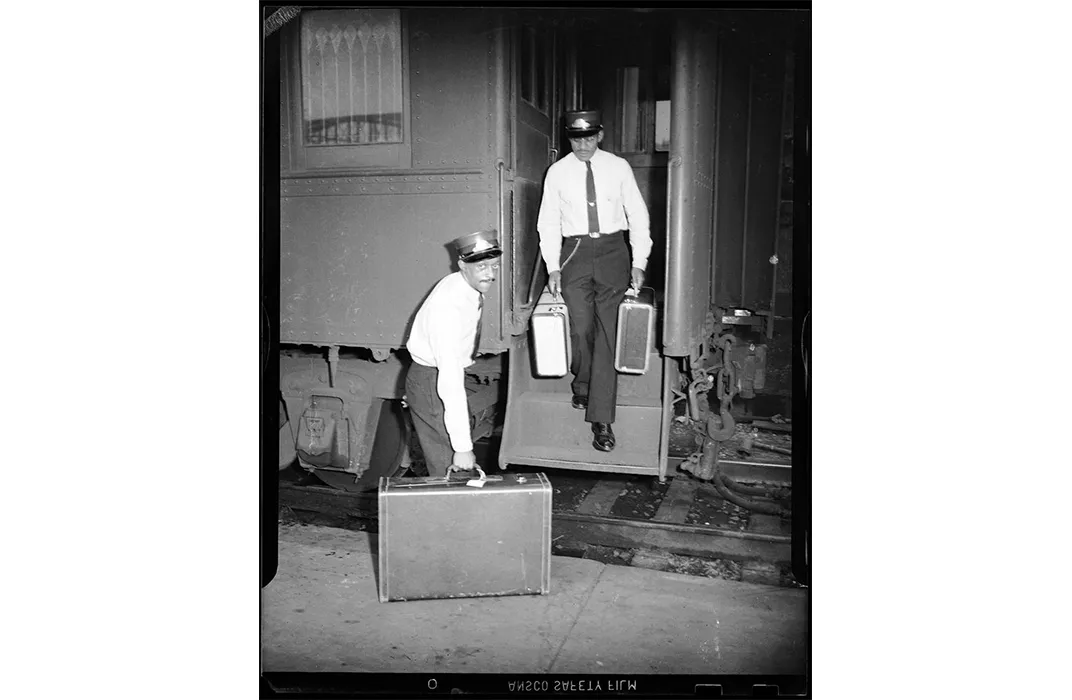
It's a good thing Phileas Fogg didn't take a trunk, because dragging one from steamship to railroad to carriage to hot air balloon would have ruined his rapid pace. Trunk-laden travel was becoming increasingly illogical as long-distance transportation grew more common and diverse. Up to that point, tourism had begun a decidedly upper-class phenomenon, and the rich could rely on an army of hired hands to carry luggage. In the 18th century, young European elites on the Grand Tour had often traveled with several servants in a coach filled with trunks and furniture. There wasn't sufficient incentive to revise an inconvenient design while rich travelers simply relied on railway porters and hotel bellhops. (Indeed, when Fogg meets an Indian princess along the way, he buys luggage for her, and the pair is soon carried to their steamship by palanquin—basically a chair with handles that's lifted with human labor—with “their luggage brought up after on a wheelbarrow.”)
But the late 19th century marked a pivot point in the history of transportation: it was the beginning of mass tourism, of travel for travel's sake (as opposed to, say, pilgrimages to Jerusalem or migration to industrial mill towns.) Humans had long traveled for the sake of curiosity and exploration, of course, but by 1900 or so, hotels in Switzerland were recording millions of overnight stays per year, and a summer day could draw hundreds of thousands of visitors to British beaches. Travel wasn't just for the wealthy anymore.
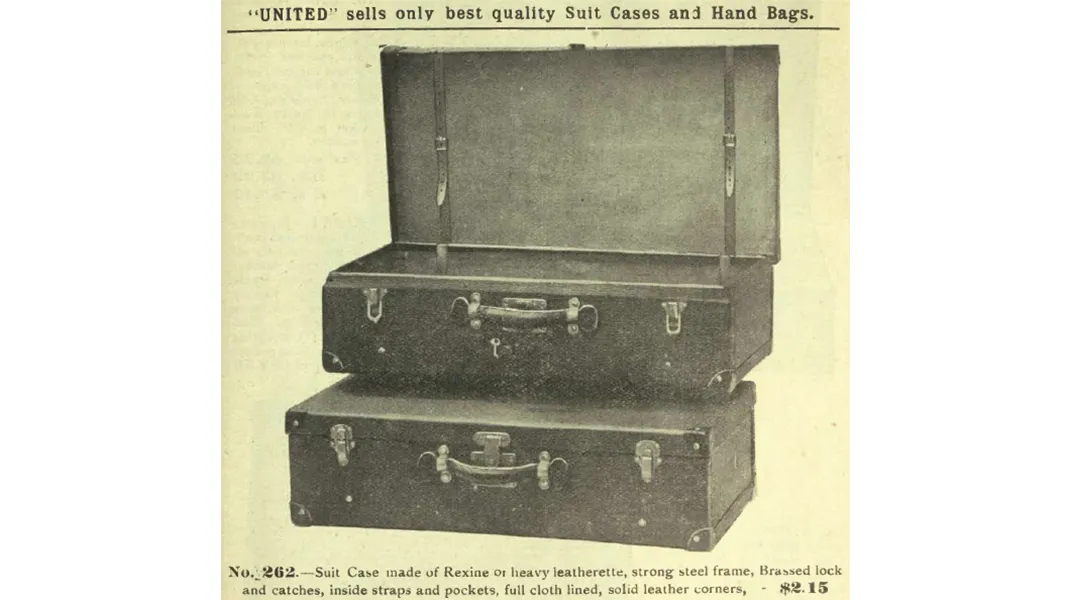
Suitcases began as an afterthought in the luggage and leather goods business, but they soon became the very symbol of travel. An 1897 wholesale price list included the words “suit case” only twice in a 20-page list of luggage types. In a 1907 T. Eaton & Co. catalog, trunks took up a full page while suitcases share a page with club bags and valises. In a 1911 United Company catalog, however, around 40 percent of the advertisements were for suitcases. (It's worth pointing out that these catalogs were from North America, where migration required people—and not just the wealthy—to carry their own belongings far and often).
Early suitcases (usually called “suit cases” or “suit-cases”) were lighter and more portable than trunks, but they were still bulky by today's standards. Leather, wicker or thick rubbery cloth was stretched over a rigid wood or steel frame. Corners were rounded out using brass or leather caps. Such suitcases tended to have roughly the proportions of a hardback book: flattened and easy to carry, with a handle on the long side. Until steamship travel declined during the mid-20th century, many were advertised as waterproof. Lightweight models were often marketed specifically to women.
As trunks went out of style, suitcases took on not just practical but also cultural significance. By the 1920s, suitcases featured in books such as The Hardy Boys and such films as The Woman in the Suitcase , as a literary symbol for both mobility and mystery—perhaps filled with gold, photographs, or simply a stranger's possessions. During the Great Depression, farmers who worked fields away from home were called “suitcase farmers.”
Suitcases still had a ways to go before achieving their present form, though. With the rapid expansion in automobile travel during in the 1920s, and a more gradual expansion of air travel a couple decades later, suitcases found new applications but also new kinds of competition. A 1933 business report written to President Franklin Roosevelt by Hugh S. Johnson, an administrator in the National Recovery Administration, put it this way: “With the increase in the use of automobiles, it has become easy to utilize simple cardboard containers secured at little or no cost, in the back of the automobile in lieu of luggage.” Suitcases, in other words, had to get lighter and cheaper if they wanted to compete. The robust wood, steel, and heavy leather suitcase gave way to cardboard and plastic models that emphasized “modern” materials and convenience.
Think back now to the suitcases you can buy today. Many feature large pieces of rounded hard plastic (a practice which seems to have started in the 1960s ), or are built with synthetic fabrics stretched over minimalist alloy frames. Zippers have largely replaced clasps, and few suitcases are specifically waterproof. Perhaps most importantly, suitcases come in two distinct sizes—“carry-on” or “check-in”—both of which tend to come with wheels.
/https://tf-cmsv2-smithsonianmag-media.s3.amazonaws.com/filer/d4/d0/d4d080ac-95e8-453a-b769-791191bf61c0/42-44762024.jpg)
Essentially all these developments came in the last half-century or so, particularly with the onset of mass aviation. Unlike transportation by automobile, which takes a traveler from door to door, a long flight can require half a mile of walking during check-in, layovers, and arrival. And while a ship's hold or luggage car could store large amounts of luggage regardless of shape, an airplane's stowage areas have specific proportions and size limits. The suitcase had to adapt, as a 1970 patent by Bernard Sadow explained:
Whereas formerly luggage would be handled by porters and be loaded or unloaded at points convenient to the street, the large terminals of today, particularly air terminals, have increased the difficulty of baggage handling. Thus, it is often necessary for a passenger to handle his own baggage in an air, rail, or bus terminal. Further, where the passenger does handle his own luggage, he is often required to walk very great distances.

Sadow's patent, as you might have guessed, was the crucial innovation of the wheeled suitcase. 1970 may seem remarkably recent for such a useful development. (A wheeled trunk was patented in 1887, and a wheeled suitcase in 1945—those initial models simply didn't catch on). We have to remember that aviation had only recently become truly widespread, though: in the two decades before the patent, flights had increased their passenger totals by ten times , from 17 million in 1949 to 172 million in 1969. That was also the year that set records for the most hijackings in a year, with an astonishing 82—a fact which contributed to increasingly strict baggage checks that funneled passengers through longer lines on the way to centralized security checkpoints.
Luggage design remains tightly linked to aviation. Carry-on luggage (which, by the way, was transformed in 1987 with the wheeled “Rollaboard” bag and its now-ubiquitous collapsible handle) conforms to the dimensions of the airlines with the smallest storage area. When new weight restrictions for checked bags kicked in during the 2000s, meanwhile, practically every luggage manufacturer released new lightweight models to stay competitive. These suitcases tend to be vertical instead of horizontal, because of their wheels, and relatively stout and thick, because of airline restrictions on suitcase dimensions.
There's an irony to the shape of these modern suitcases. They've come a long way from the flat and stackable “dress-suit case,” shaped like a big hardback book. Today's luggage instead fits the rough proportions of a big shoe box—and this gives it almost the same shape as those unwieldy trunks that Phileas Fogg preferred to leave at home. A century of revolution in transportation, in other words, seems to have brought us back to the hefty trunk shape that the first suitcases replaced. Just as we might pack and re-pack our belongings to fit our luggage, we make and re-make our luggage to fit our built world.
Get the latest History stories in your inbox?
Click to visit our Privacy Statement .
Daniel A. Gross | | READ MORE
Daniel A. Gross is a freelance journalist and public radio producer based in Boston.
- Share full article
Advertisement
Supported by
Word Through The Times
A Productive Chat on the Significance of ‘Slack’
Once referring to those prone to idle behavior, the word has come somewhat full circle.

By Sarah Diamond
In Word Through The Times, we trace how one word or phrase has changed throughout the history of the newspaper.
In 2011, The New York Times published an article examining the assertion by some elders that millennials are “a generation of slackers.” Such assumptions about younger generations are nothing new. “Even Aristotle and Plato were said to have expressed similar feelings about the slacker youth of their times,” the article read. While we might use the word “slack” to refer to a certain messaging app today, “it appears in some of our earliest Old English written records,” the lexicographer Kory Stamper said.
In its earliest known use, “slack” as an adjective was used to describe a person “inclined to be lazy or idle,” according to the Oxford English Dictionary . In 1860, The Times published testimony from a hearing about the role of public money in supporting political parties’ newspapers and elections. A printer who worked for Congress took the stand and said of an editor he disliked, “I found him rather slack in it, and was compelled to procure other editorial assistance.”
But “slack” didn’t just describe the state of one editor’s productivity. By the 14th century, it was being used to describe something more physical, as in objects that are “not drawn or held tightly or tensely,” per the Oxford English Dictionary .
“Slack” was common in sailing parlance. The term “cut him some slack,” William Safire wrote in his On Language column in 1994, “derived from loosening a taut rope in sailing.” In 1860, The Times wrote about a massive steamship’s journey to Cape May, N.J . The article noted a cable that had to be replaced upon its arrival, “the slack of which was pulled out by the weight of the anchor.”
Ropes aside, “slack” in the plural had become somewhat synonymous with an everyday piece of clothing by the early 1900s: pants. A Times obituary in 1906 about a member of the U.S. Navy described the individual as “a highly educated cod” who “would have h’isted his slacks if he’d had ’em,” according to accounts by his fellow servicemen.
When it wasn’t describing a pair of trousers, “slack” was also being used in a more serious, accusatory tone. Sometime during World War I, the noun “slacker” began to appear frequently in The Times as a derogatory term for anyone avoiding military service. In 1921, The Times wrote about the War Department’s published “slacker list,” which named approximately 155,000 slackers and deserters for “condemnation,” the article stated. In World War II, “it was used interchangeably with draft dodger,” Mr. Safire also wrote .
Today, the term “slacker” might prompt a different connotation, perhaps messaging related . The company Slack — an acronym for Searchable Log of All Conversation and Knowledge — was designed as a communications platform and became a workplace hit . In recent years, The Times has reported on ways to stop Slack from taking over your life and couples who use the platform to manage their relationships . “Slack is the classic Silicon Valley accidental success,” The Times reporter Katie Benner wrote in 2017. “But isn’t it funny,” she said in a recent interview, “that a tool to maximize productivity is called Slack?”
Sarah Diamond is a Times audio producer, based in New York. She also writes a biweekly column, Word Through The Times . More about Sarah Diamond
- Search Menu
Sign in through your institution
- Browse content in Arts and Humanities
- Browse content in Archaeology
- Anglo-Saxon and Medieval Archaeology
- Archaeological Methodology and Techniques
- Archaeology by Region
- Archaeology of Religion
- Archaeology of Trade and Exchange
- Biblical Archaeology
- Contemporary and Public Archaeology
- Environmental Archaeology
- Historical Archaeology
- History and Theory of Archaeology
- Industrial Archaeology
- Landscape Archaeology
- Mortuary Archaeology
- Prehistoric Archaeology
- Underwater Archaeology
- Zooarchaeology
- Browse content in Architecture
- Architectural Structure and Design
- History of Architecture
- Residential and Domestic Buildings
- Theory of Architecture
- Browse content in Art
- Art Subjects and Themes
- History of Art
- Industrial and Commercial Art
- Theory of Art
- Biographical Studies
- Byzantine Studies
- Browse content in Classical Studies
- Classical History
- Classical Philosophy
- Classical Mythology
- Classical Literature
- Classical Reception
- Classical Art and Architecture
- Classical Oratory and Rhetoric
- Greek and Roman Papyrology
- Greek and Roman Epigraphy
- Greek and Roman Law
- Greek and Roman Archaeology
- Late Antiquity
- Religion in the Ancient World
- Digital Humanities
- Browse content in History
- Colonialism and Imperialism
- Diplomatic History
- Environmental History
- Genealogy, Heraldry, Names, and Honours
- Genocide and Ethnic Cleansing
- Historical Geography
- History by Period
- History of Emotions
- History of Agriculture
- History of Education
- History of Gender and Sexuality
- Industrial History
- Intellectual History
- International History
- Labour History
- Legal and Constitutional History
- Local and Family History
- Maritime History
- Military History
- National Liberation and Post-Colonialism
- Oral History
- Political History
- Public History
- Regional and National History
- Revolutions and Rebellions
- Slavery and Abolition of Slavery
- Social and Cultural History
- Theory, Methods, and Historiography
- Urban History
- World History
- Browse content in Language Teaching and Learning
- Language Learning (Specific Skills)
- Language Teaching Theory and Methods
- Browse content in Linguistics
- Applied Linguistics
- Cognitive Linguistics
- Computational Linguistics
- Forensic Linguistics
- Grammar, Syntax and Morphology
- Historical and Diachronic Linguistics
- History of English
- Language Evolution
- Language Reference
- Language Acquisition
- Language Variation
- Language Families
- Lexicography
- Linguistic Anthropology
- Linguistic Theories
- Linguistic Typology
- Phonetics and Phonology
- Psycholinguistics
- Sociolinguistics
- Translation and Interpretation
- Writing Systems
- Browse content in Literature
- Bibliography
- Children's Literature Studies
- Literary Studies (Romanticism)
- Literary Studies (American)
- Literary Studies (Asian)
- Literary Studies (European)
- Literary Studies (Eco-criticism)
- Literary Studies (Modernism)
- Literary Studies - World
- Literary Studies (1500 to 1800)
- Literary Studies (19th Century)
- Literary Studies (20th Century onwards)
- Literary Studies (African American Literature)
- Literary Studies (British and Irish)
- Literary Studies (Early and Medieval)
- Literary Studies (Fiction, Novelists, and Prose Writers)
- Literary Studies (Gender Studies)
- Literary Studies (Graphic Novels)
- Literary Studies (History of the Book)
- Literary Studies (Plays and Playwrights)
- Literary Studies (Poetry and Poets)
- Literary Studies (Postcolonial Literature)
- Literary Studies (Queer Studies)
- Literary Studies (Science Fiction)
- Literary Studies (Travel Literature)
- Literary Studies (War Literature)
- Literary Studies (Women's Writing)
- Literary Theory and Cultural Studies
- Mythology and Folklore
- Shakespeare Studies and Criticism
- Browse content in Media Studies
- Browse content in Music
- Applied Music
- Dance and Music
- Ethics in Music
- Ethnomusicology
- Gender and Sexuality in Music
- Medicine and Music
- Music Cultures
- Music and Media
- Music and Religion
- Music and Culture
- Music Education and Pedagogy
- Music Theory and Analysis
- Musical Scores, Lyrics, and Libretti
- Musical Structures, Styles, and Techniques
- Musicology and Music History
- Performance Practice and Studies
- Race and Ethnicity in Music
- Sound Studies
- Browse content in Performing Arts
- Browse content in Philosophy
- Aesthetics and Philosophy of Art
- Epistemology
- Feminist Philosophy
- History of Western Philosophy
- Metaphysics
- Moral Philosophy
- Non-Western Philosophy
- Philosophy of Language
- Philosophy of Mind
- Philosophy of Perception
- Philosophy of Science
- Philosophy of Action
- Philosophy of Law
- Philosophy of Religion
- Philosophy of Mathematics and Logic
- Practical Ethics
- Social and Political Philosophy
- Browse content in Religion
- Biblical Studies
- Christianity
- East Asian Religions
- History of Religion
- Judaism and Jewish Studies
- Qumran Studies
- Religion and Education
- Religion and Health
- Religion and Politics
- Religion and Science
- Religion and Law
- Religion and Art, Literature, and Music
- Religious Studies
- Browse content in Society and Culture
- Cookery, Food, and Drink
- Cultural Studies
- Customs and Traditions
- Ethical Issues and Debates
- Hobbies, Games, Arts and Crafts
- Natural world, Country Life, and Pets
- Popular Beliefs and Controversial Knowledge
- Sports and Outdoor Recreation
- Technology and Society
- Travel and Holiday
- Visual Culture
- Browse content in Law
- Arbitration
- Browse content in Company and Commercial Law
- Commercial Law
- Company Law
- Browse content in Comparative Law
- Systems of Law
- Competition Law
- Browse content in Constitutional and Administrative Law
- Government Powers
- Judicial Review
- Local Government Law
- Military and Defence Law
- Parliamentary and Legislative Practice
- Construction Law
- Contract Law
- Browse content in Criminal Law
- Criminal Procedure
- Criminal Evidence Law
- Sentencing and Punishment
- Employment and Labour Law
- Environment and Energy Law
- Browse content in Financial Law
- Banking Law
- Insolvency Law
- History of Law
- Human Rights and Immigration
- Intellectual Property Law
- Browse content in International Law
- Private International Law and Conflict of Laws
- Public International Law
- IT and Communications Law
- Jurisprudence and Philosophy of Law
- Law and Politics
- Law and Society
- Browse content in Legal System and Practice
- Courts and Procedure
- Legal Skills and Practice
- Primary Sources of Law
- Regulation of Legal Profession
- Medical and Healthcare Law
- Browse content in Policing
- Criminal Investigation and Detection
- Police and Security Services
- Police Procedure and Law
- Police Regional Planning
- Browse content in Property Law
- Personal Property Law
- Study and Revision
- Terrorism and National Security Law
- Browse content in Trusts Law
- Wills and Probate or Succession
- Browse content in Medicine and Health
- Browse content in Allied Health Professions
- Arts Therapies
- Clinical Science
- Dietetics and Nutrition
- Occupational Therapy
- Operating Department Practice
- Physiotherapy
- Radiography
- Speech and Language Therapy
- Browse content in Anaesthetics
- General Anaesthesia
- Neuroanaesthesia
- Clinical Neuroscience
- Browse content in Clinical Medicine
- Acute Medicine
- Cardiovascular Medicine
- Clinical Genetics
- Clinical Pharmacology and Therapeutics
- Dermatology
- Endocrinology and Diabetes
- Gastroenterology
- Genito-urinary Medicine
- Geriatric Medicine
- Infectious Diseases
- Medical Toxicology
- Medical Oncology
- Pain Medicine
- Palliative Medicine
- Rehabilitation Medicine
- Respiratory Medicine and Pulmonology
- Rheumatology
- Sleep Medicine
- Sports and Exercise Medicine
- Community Medical Services
- Critical Care
- Emergency Medicine
- Forensic Medicine
- Haematology
- History of Medicine
- Browse content in Medical Skills
- Clinical Skills
- Communication Skills
- Nursing Skills
- Surgical Skills
- Browse content in Medical Dentistry
- Oral and Maxillofacial Surgery
- Paediatric Dentistry
- Restorative Dentistry and Orthodontics
- Surgical Dentistry
- Medical Ethics
- Medical Statistics and Methodology
- Browse content in Neurology
- Clinical Neurophysiology
- Neuropathology
- Nursing Studies
- Browse content in Obstetrics and Gynaecology
- Gynaecology
- Occupational Medicine
- Ophthalmology
- Otolaryngology (ENT)
- Browse content in Paediatrics
- Neonatology
- Browse content in Pathology
- Chemical Pathology
- Clinical Cytogenetics and Molecular Genetics
- Histopathology
- Medical Microbiology and Virology
- Patient Education and Information
- Browse content in Pharmacology
- Psychopharmacology
- Browse content in Popular Health
- Caring for Others
- Complementary and Alternative Medicine
- Self-help and Personal Development
- Browse content in Preclinical Medicine
- Cell Biology
- Molecular Biology and Genetics
- Reproduction, Growth and Development
- Primary Care
- Professional Development in Medicine
- Browse content in Psychiatry
- Addiction Medicine
- Child and Adolescent Psychiatry
- Forensic Psychiatry
- Learning Disabilities
- Old Age Psychiatry
- Psychotherapy
- Browse content in Public Health and Epidemiology
- Epidemiology
- Public Health
- Browse content in Radiology
- Clinical Radiology
- Interventional Radiology
- Nuclear Medicine
- Radiation Oncology
- Reproductive Medicine
- Browse content in Surgery
- Cardiothoracic Surgery
- Gastro-intestinal and Colorectal Surgery
- General Surgery
- Neurosurgery
- Paediatric Surgery
- Peri-operative Care
- Plastic and Reconstructive Surgery
- Surgical Oncology
- Transplant Surgery
- Trauma and Orthopaedic Surgery
- Vascular Surgery
- Browse content in Science and Mathematics
- Browse content in Biological Sciences
- Aquatic Biology
- Biochemistry
- Bioinformatics and Computational Biology
- Developmental Biology
- Ecology and Conservation
- Evolutionary Biology
- Genetics and Genomics
- Microbiology
- Molecular and Cell Biology
- Natural History
- Plant Sciences and Forestry
- Research Methods in Life Sciences
- Structural Biology
- Systems Biology
- Zoology and Animal Sciences
- Browse content in Chemistry
- Analytical Chemistry
- Computational Chemistry
- Crystallography
- Environmental Chemistry
- Industrial Chemistry
- Inorganic Chemistry
- Materials Chemistry
- Medicinal Chemistry
- Mineralogy and Gems
- Organic Chemistry
- Physical Chemistry
- Polymer Chemistry
- Study and Communication Skills in Chemistry
- Theoretical Chemistry
- Browse content in Computer Science
- Artificial Intelligence
- Computer Architecture and Logic Design
- Game Studies
- Human-Computer Interaction
- Mathematical Theory of Computation
- Programming Languages
- Software Engineering
- Systems Analysis and Design
- Virtual Reality
- Browse content in Computing
- Business Applications
- Computer Security
- Computer Games
- Computer Networking and Communications
- Digital Lifestyle
- Graphical and Digital Media Applications
- Operating Systems
- Browse content in Earth Sciences and Geography
- Atmospheric Sciences
- Environmental Geography
- Geology and the Lithosphere
- Maps and Map-making
- Meteorology and Climatology
- Oceanography and Hydrology
- Palaeontology
- Physical Geography and Topography
- Regional Geography
- Soil Science
- Urban Geography
- Browse content in Engineering and Technology
- Agriculture and Farming
- Biological Engineering
- Civil Engineering, Surveying, and Building
- Electronics and Communications Engineering
- Energy Technology
- Engineering (General)
- Environmental Science, Engineering, and Technology
- History of Engineering and Technology
- Mechanical Engineering and Materials
- Technology of Industrial Chemistry
- Transport Technology and Trades
- Browse content in Environmental Science
- Applied Ecology (Environmental Science)
- Conservation of the Environment (Environmental Science)
- Environmental Sustainability
- Environmentalist Thought and Ideology (Environmental Science)
- Management of Land and Natural Resources (Environmental Science)
- Natural Disasters (Environmental Science)
- Nuclear Issues (Environmental Science)
- Pollution and Threats to the Environment (Environmental Science)
- Social Impact of Environmental Issues (Environmental Science)
- History of Science and Technology
- Browse content in Materials Science
- Ceramics and Glasses
- Composite Materials
- Metals, Alloying, and Corrosion
- Nanotechnology
- Browse content in Mathematics
- Applied Mathematics
- Biomathematics and Statistics
- History of Mathematics
- Mathematical Education
- Mathematical Finance
- Mathematical Analysis
- Numerical and Computational Mathematics
- Probability and Statistics
- Pure Mathematics
- Browse content in Neuroscience
- Cognition and Behavioural Neuroscience
- Development of the Nervous System
- Disorders of the Nervous System
- History of Neuroscience
- Invertebrate Neurobiology
- Molecular and Cellular Systems
- Neuroendocrinology and Autonomic Nervous System
- Neuroscientific Techniques
- Sensory and Motor Systems
- Browse content in Physics
- Astronomy and Astrophysics
- Atomic, Molecular, and Optical Physics
- Biological and Medical Physics
- Classical Mechanics
- Computational Physics
- Condensed Matter Physics
- Electromagnetism, Optics, and Acoustics
- History of Physics
- Mathematical and Statistical Physics
- Measurement Science
- Nuclear Physics
- Particles and Fields
- Plasma Physics
- Quantum Physics
- Relativity and Gravitation
- Semiconductor and Mesoscopic Physics
- Browse content in Psychology
- Affective Sciences
- Clinical Psychology
- Cognitive Psychology
- Cognitive Neuroscience
- Criminal and Forensic Psychology
- Developmental Psychology
- Educational Psychology
- Evolutionary Psychology
- Health Psychology
- History and Systems in Psychology
- Music Psychology
- Neuropsychology
- Organizational Psychology
- Psychological Assessment and Testing
- Psychology of Human-Technology Interaction
- Psychology Professional Development and Training
- Research Methods in Psychology
- Social Psychology
- Browse content in Social Sciences
- Browse content in Anthropology
- Anthropology of Religion
- Human Evolution
- Medical Anthropology
- Physical Anthropology
- Regional Anthropology
- Social and Cultural Anthropology
- Theory and Practice of Anthropology
- Browse content in Business and Management
- Business Ethics
- Business Strategy
- Business History
- Business and Technology
- Business and Government
- Business and the Environment
- Comparative Management
- Corporate Governance
- Corporate Social Responsibility
- Entrepreneurship
- Health Management
- Human Resource Management
- Industrial and Employment Relations
- Industry Studies
- Information and Communication Technologies
- International Business
- Knowledge Management
- Management and Management Techniques
- Operations Management
- Organizational Theory and Behaviour
- Pensions and Pension Management
- Public and Nonprofit Management
- Strategic Management
- Supply Chain Management
- Browse content in Criminology and Criminal Justice
- Criminal Justice
- Criminology
- Forms of Crime
- International and Comparative Criminology
- Youth Violence and Juvenile Justice
- Development Studies
- Browse content in Economics
- Agricultural, Environmental, and Natural Resource Economics
- Asian Economics
- Behavioural Finance
- Behavioural Economics and Neuroeconomics
- Econometrics and Mathematical Economics
- Economic History
- Economic Systems
- Economic Methodology
- Economic Development and Growth
- Financial Markets
- Financial Institutions and Services
- General Economics and Teaching
- Health, Education, and Welfare
- History of Economic Thought
- International Economics
- Labour and Demographic Economics
- Law and Economics
- Macroeconomics and Monetary Economics
- Microeconomics
- Public Economics
- Urban, Rural, and Regional Economics
- Welfare Economics
- Browse content in Education
- Adult Education and Continuous Learning
- Care and Counselling of Students
- Early Childhood and Elementary Education
- Educational Equipment and Technology
- Educational Strategies and Policy
- Higher and Further Education
- Organization and Management of Education
- Philosophy and Theory of Education
- Schools Studies
- Secondary Education
- Teaching of a Specific Subject
- Teaching of Specific Groups and Special Educational Needs
- Teaching Skills and Techniques
- Browse content in Environment
- Applied Ecology (Social Science)
- Climate Change
- Conservation of the Environment (Social Science)
- Environmentalist Thought and Ideology (Social Science)
- Natural Disasters (Environment)
- Social Impact of Environmental Issues (Social Science)
- Browse content in Human Geography
- Cultural Geography
- Economic Geography
- Political Geography
- Browse content in Interdisciplinary Studies
- Communication Studies
- Museums, Libraries, and Information Sciences
- Browse content in Politics
- African Politics
- Asian Politics
- Chinese Politics
- Comparative Politics
- Conflict Politics
- Elections and Electoral Studies
- Environmental Politics
- European Union
- Foreign Policy
- Gender and Politics
- Human Rights and Politics
- Indian Politics
- International Relations
- International Organization (Politics)
- International Political Economy
- Irish Politics
- Latin American Politics
- Middle Eastern Politics
- Political Behaviour
- Political Economy
- Political Institutions
- Political Methodology
- Political Communication
- Political Philosophy
- Political Sociology
- Political Theory
- Politics and Law
- Politics of Development
- Public Policy
- Public Administration
- Quantitative Political Methodology
- Regional Political Studies
- Russian Politics
- Security Studies
- State and Local Government
- UK Politics
- US Politics
- Browse content in Regional and Area Studies
- African Studies
- Asian Studies
- East Asian Studies
- Japanese Studies
- Latin American Studies
- Middle Eastern Studies
- Native American Studies
- Scottish Studies
- Browse content in Research and Information
- Research Methods
- Browse content in Social Work
- Addictions and Substance Misuse
- Adoption and Fostering
- Care of the Elderly
- Child and Adolescent Social Work
- Couple and Family Social Work
- Direct Practice and Clinical Social Work
- Emergency Services
- Human Behaviour and the Social Environment
- International and Global Issues in Social Work
- Mental and Behavioural Health
- Social Justice and Human Rights
- Social Policy and Advocacy
- Social Work and Crime and Justice
- Social Work Macro Practice
- Social Work Practice Settings
- Social Work Research and Evidence-based Practice
- Welfare and Benefit Systems
- Browse content in Sociology
- Childhood Studies
- Community Development
- Comparative and Historical Sociology
- Economic Sociology
- Gender and Sexuality
- Gerontology and Ageing
- Health, Illness, and Medicine
- Marriage and the Family
- Migration Studies
- Occupations, Professions, and Work
- Organizations
- Population and Demography
- Race and Ethnicity
- Social Theory
- Social Movements and Social Change
- Social Research and Statistics
- Social Stratification, Inequality, and Mobility
- Sociology of Religion
- Sociology of Education
- Sport and Leisure
- Urban and Rural Studies
- Browse content in Warfare and Defence
- Defence Strategy, Planning, and Research
- Land Forces and Warfare
- Military Administration
- Military Life and Institutions
- Naval Forces and Warfare
- Other Warfare and Defence Issues
- Peace Studies and Conflict Resolution
- Weapons and Equipment

The Oxford Handbook of Tourism History
Eric G. E. Zuelow is Professor of History at the University of New England in Biddeford, Maine. He is author of A History of Modern Tourism (2015) and Making Ireland Irish: Tourism and National Identity since the Irish Civil War (2009), editor of Touring Beyond the Nation: A Transnational Approach to European Tourism History (2011), and editor of the Journal of Tourism History.
Kevin J. James is Professor of History at the University of Guelph in Canada, where he holds the Scottish Studies Foundation Chair and serves as Director of the Centre for Scottish Studies. His research programs have explored the history of the hotel visitors' book, hotels in wartime, and the history of country house hotels.
- Cite Icon Cite
- Permissions Icon Permissions
This handbook is currently in development, with individual articles publishing online in advance of print publication. At this time, we cannot add information about unpublished articles in this handbook, however the table of contents will continue to grow as additional articles pass through the review process and are added to the site. Please note that the online publication date for this handbook is the date that the first article in the title was published online. For more information, please read the site FAQs.
Signed in as
Institutional accounts.
- GoogleCrawler [DO NOT DELETE]
- Google Scholar Indexing
Personal account
- Sign in with email/username & password
- Get email alerts
- Save searches
- Purchase content
- Activate your purchase/trial code
- Add your ORCID iD
Institutional access
Sign in with a library card.
- Sign in with username/password
- Recommend to your librarian
- Institutional account management
- Get help with access
Access to content on Oxford Academic is often provided through institutional subscriptions and purchases. If you are a member of an institution with an active account, you may be able to access content in one of the following ways:
IP based access
Typically, access is provided across an institutional network to a range of IP addresses. This authentication occurs automatically, and it is not possible to sign out of an IP authenticated account.
Choose this option to get remote access when outside your institution. Shibboleth/Open Athens technology is used to provide single sign-on between your institution’s website and Oxford Academic.
- Click Sign in through your institution.
- Select your institution from the list provided, which will take you to your institution's website to sign in.
- When on the institution site, please use the credentials provided by your institution. Do not use an Oxford Academic personal account.
- Following successful sign in, you will be returned to Oxford Academic.
If your institution is not listed or you cannot sign in to your institution’s website, please contact your librarian or administrator.
Enter your library card number to sign in. If you cannot sign in, please contact your librarian.
Society Members
Society member access to a journal is achieved in one of the following ways:
Sign in through society site
Many societies offer single sign-on between the society website and Oxford Academic. If you see ‘Sign in through society site’ in the sign in pane within a journal:
- Click Sign in through society site.
- When on the society site, please use the credentials provided by that society. Do not use an Oxford Academic personal account.
If you do not have a society account or have forgotten your username or password, please contact your society.
Sign in using a personal account
Some societies use Oxford Academic personal accounts to provide access to their members. See below.
A personal account can be used to get email alerts, save searches, purchase content, and activate subscriptions.
Some societies use Oxford Academic personal accounts to provide access to their members.
Viewing your signed in accounts
Click the account icon in the top right to:
- View your signed in personal account and access account management features.
- View the institutional accounts that are providing access.
Signed in but can't access content
Oxford Academic is home to a wide variety of products. The institutional subscription may not cover the content that you are trying to access. If you believe you should have access to that content, please contact your librarian.
For librarians and administrators, your personal account also provides access to institutional account management. Here you will find options to view and activate subscriptions, manage institutional settings and access options, access usage statistics, and more.
Our books are available by subscription or purchase to libraries and institutions.
- About Oxford Academic
- Publish journals with us
- University press partners
- What we publish
- New features
- Open access
- Rights and permissions
- Accessibility
- Advertising
- Media enquiries
- Oxford University Press
- Oxford Languages
- University of Oxford
Oxford University Press is a department of the University of Oxford. It furthers the University's objective of excellence in research, scholarship, and education by publishing worldwide
- Copyright © 2024 Oxford University Press
- Cookie settings
- Cookie policy
- Privacy policy
- Legal notice
This Feature Is Available To Subscribers Only
Sign In or Create an Account
This PDF is available to Subscribers Only
For full access to this pdf, sign in to an existing account, or purchase an annual subscription.

When was a word first used in print? You may be surprised! Enter a date below to see the words first recorded on that year. To learn more about First Known Use dates, click here .
More From Forbes
Wine writing lessons from some of history’s great travel writers.
- Share to Facebook
- Share to Twitter
- Share to Linkedin
The sun sets over the Parthenon (Photo by Scott Barbour/Getty Images)
Never before have so many wanted to spend their days visiting vineyards and writing about the magical subject of wine. Yet somehow, the profession (or should I say vocation?) is in a state of crisis. Arguably, it always has been. Nevertheless, as wine publications struggle for revenue, and the large tech platforms further choke visibility and traffic, the fragmentation of quality voices continues. Dispersing in their wake is a critical mass of engaged readers. With A.I. lurking menacingly on the horizon, raising the bar on quality is crucial for survival.
Given the stakes, we might consider an extended delve into early 20th century English travel writing as a little indulgent. Lingering on the pretty phrases of well-schooled gentlemen, endlessly keen to express their comfort with the great works of the ancient world, would usually sit at odds with the incessant buzz of notifications, emails and the need to keep content and invoices flowing.
Yet, the predicament is providing splendid opportunity for meandering exploration through some of the more literary and erudite texts of the genre. In many cases, they are harmless, hapless adventures, and ooze the kind of personality that makes such writing timeless. So, filing my inquiry under research, and temporary escapism, I embarked on Robert Bryon’s iconic Road to Oxiana .
Published in 1937, it charts his journey through the Levant and across the Middle East. Byron’s self deprecating tone will inevitably strike a more pertinent chord with the British reader, but it is universally acknowledged a masterpiece for its balance of witty memoir and poignant observation. Sensual prose bring exotic scenes to life, capturing the essence of people and place.
The author’s primary interest lies in the great monuments of Islam, but his deep knowledge is administered carefully, diluted with engaging journal entries that document the trials and tribulations of a colourful and unpredictable journey. Clearly, he is well versed in his field and able to braid scholarly comment, but it remains a backdrop, and a device for maintaining order lest his more comedic characters infringe on the intended atmosphere. For Byron, architecture (we may read wine) is a reason for travel, but it is certainly not the story .
‘Godzilla Minus One’ Is Coming To Netflix This Weekend, But There’s A Catch
What to watch this weekend new streaming shows and movies on netflix hulu prime video and more, wwe smackdown results winners and grades as aj styles turns heel again.
Henry Vollam Morton is another outstanding travel writer of a bygone era, despite suggestions of appalling character. Over the last few days I’ve found it difficult to put down A Traveller in Southern Italy (1969). Although less poetic, the format is similar. Enthralment with the lives of the Saints provides motivation for his expedition, but his writing draws from the well of knowledge modestly - skilfully aware of the importance of peeling back the curtain and standing clear.
Inevitably, the subject of wine provides rich material for the writer and there are many enclaves in which to develop a specialism. For me, the most alluring wine writing, and the most age-worthy, provokes and evokes in a way that the best travel writing does. It connects on an emotional level and makes one long for experience. Put simply, the best books about wine are often not really about wine - at least, not entirely.
Paul Theroux, the great American writer noted that, “travel writing begins in journalism, slides into fiction, and ends in autobiography”. When I think back to those bright and elegant columns by Hugh Johnson or Michael Broadbent, I am reminded of a note by Hemingway. “If a writer knows enough about what he is writing about, he may omit things that he knows. The dignity of movement of an iceberg is due to only one ninth of it being above water.”

- Editorial Standards
- Reprints & Permissions
Join The Conversation
One Community. Many Voices. Create a free account to share your thoughts.
Forbes Community Guidelines
Our community is about connecting people through open and thoughtful conversations. We want our readers to share their views and exchange ideas and facts in a safe space.
In order to do so, please follow the posting rules in our site's Terms of Service. We've summarized some of those key rules below. Simply put, keep it civil.
Your post will be rejected if we notice that it seems to contain:
- False or intentionally out-of-context or misleading information
- Insults, profanity, incoherent, obscene or inflammatory language or threats of any kind
- Attacks on the identity of other commenters or the article's author
- Content that otherwise violates our site's terms.
User accounts will be blocked if we notice or believe that users are engaged in:
- Continuous attempts to re-post comments that have been previously moderated/rejected
- Racist, sexist, homophobic or other discriminatory comments
- Attempts or tactics that put the site security at risk
- Actions that otherwise violate our site's terms.
So, how can you be a power user?
- Stay on topic and share your insights
- Feel free to be clear and thoughtful to get your point across
- ‘Like’ or ‘Dislike’ to show your point of view.
- Protect your community.
- Use the report tool to alert us when someone breaks the rules.
Thanks for reading our community guidelines. Please read the full list of posting rules found in our site's Terms of Service.

Dutch Waterways
Embark on a seven-night cruise brimming with centuries of history and Old World splendor along the intimate waterways of the Netherlands and Belgium.
- Explore the enchanting city of Amsterdam, delight in a leisurely cruise along the canals, and visit Keukenhof Gardens, where you’ll be surrounded by a sea of colorful tulips that showcase the Netherlands’ love for horticulture.
- Admire Enkhuizen’s landmarks on foot and by boat, tour Hoorn’s picturesque 17th-century port town, or bike through the West Frisian countryside.
- See The Hague and the Mauritshuis’ celebrated masterpieces, watch artisans at the Royal Delft porcelain factory, or sample farm-fresh cheeses in Gouda.
- Be introduced to the Dutch Golden Age city of Enkhuizen and the laid-back harbor town of Veere as you enjoy enriching lectures and a choice of included excursions.
Day 1: Depart U.S. for Amsterdam, Netherlands Day 2: Amsterdam Day 3: Amsterdam Day 4: Enkhuizen | Hoorn Day 5: Utrecht | The Hague | Delft | Gouda Day 6: Veere Day 7: Middelburg | Bruges, Belgium | Antwerp Day 8: Antwerp Day 9: Depart for U.S.
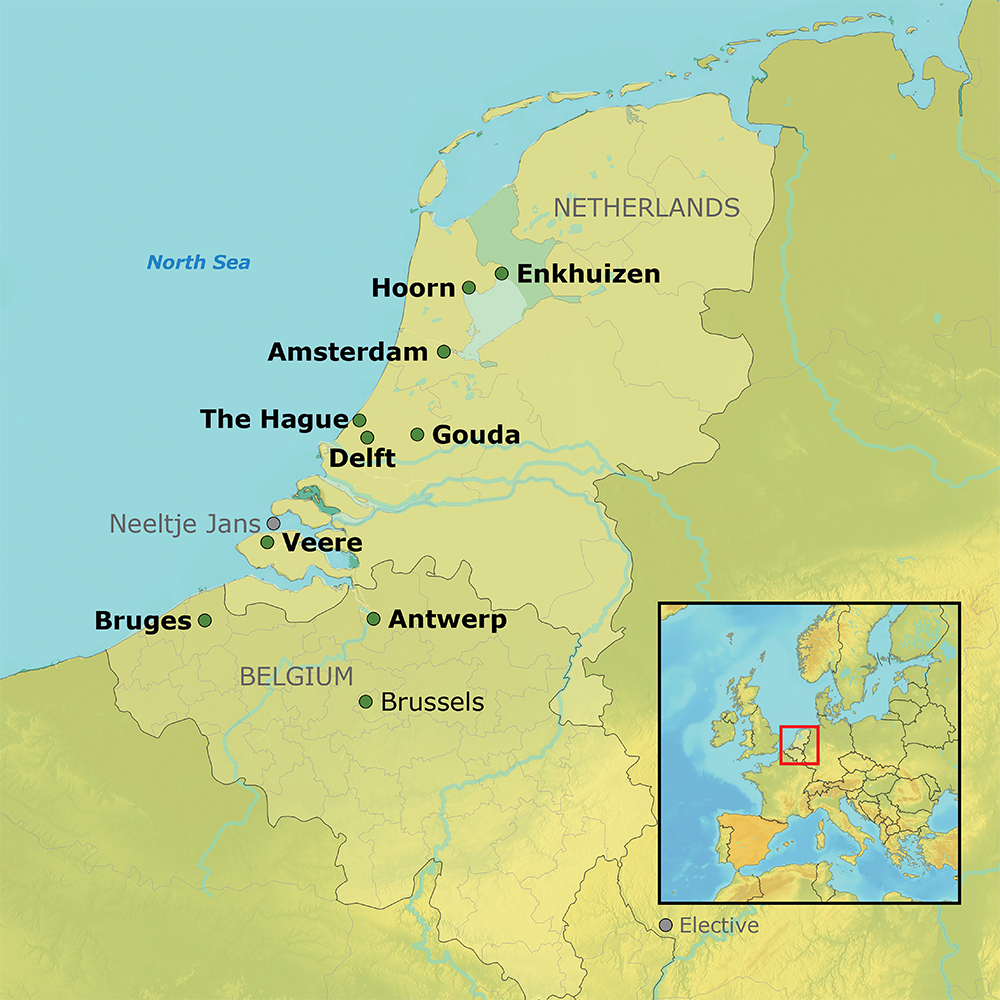
Starting price
Deposit per person, countries visited, activity level.
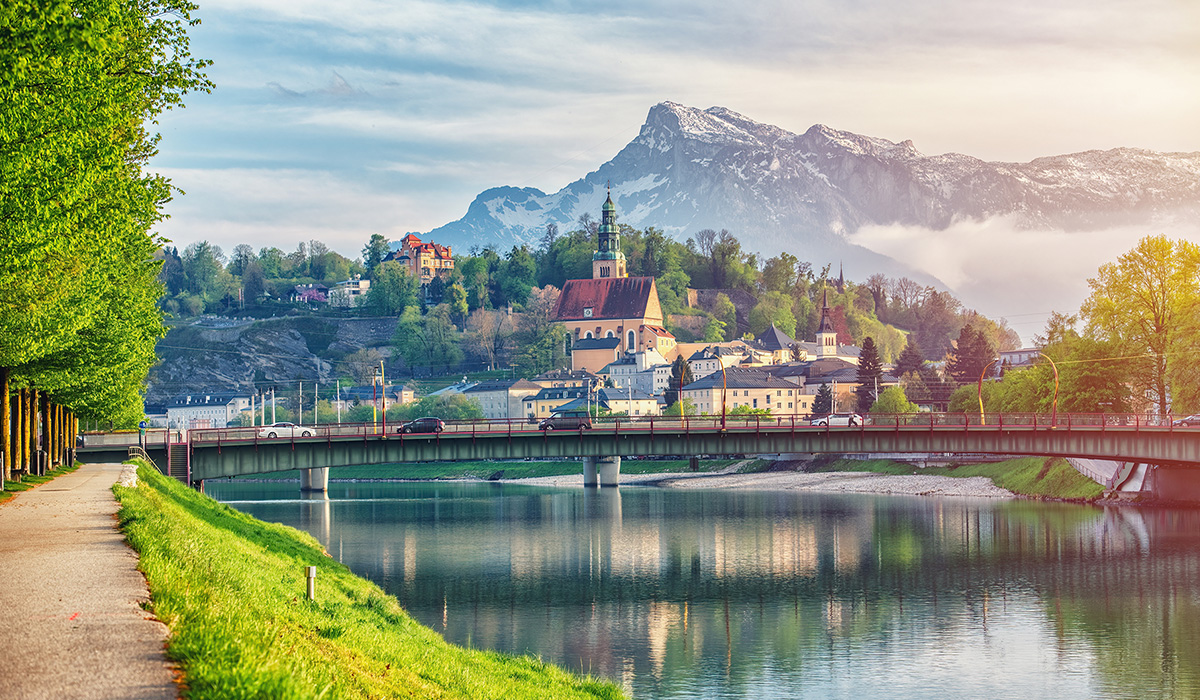
Enchanting Gems of Austria: Graz & Salzburg

Alpine Splendor
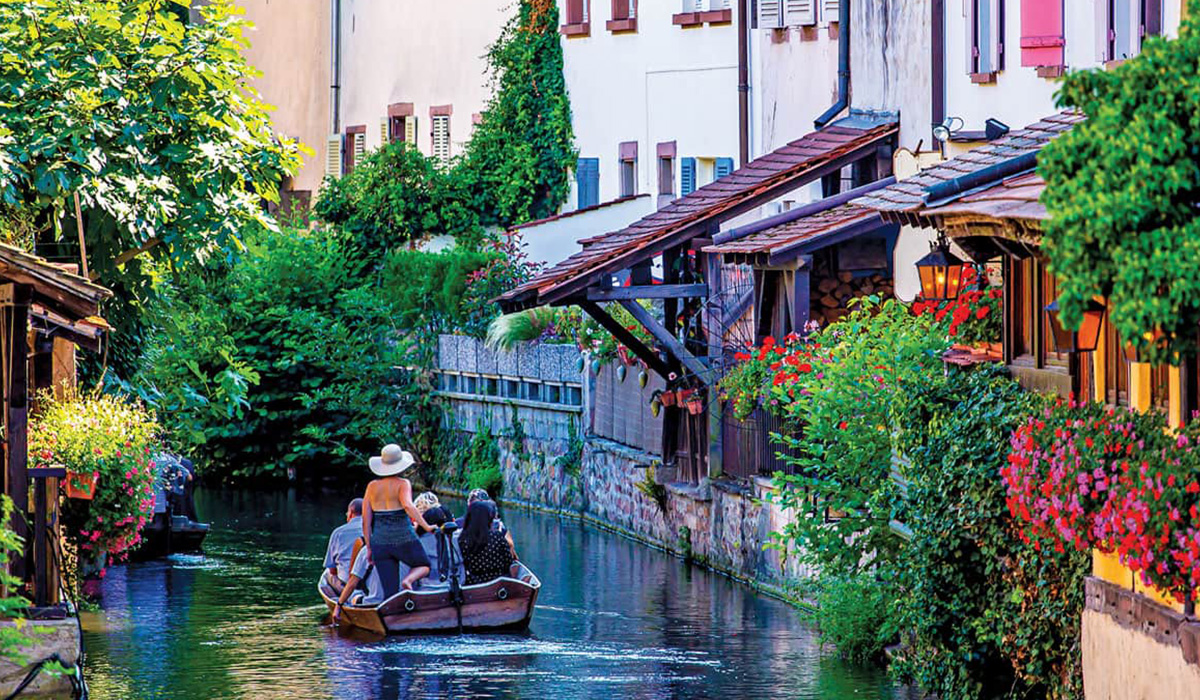
Alsace ~ Fairytale France

The Oldest Cities In The World To Add To Your Travel Bucket List
T he world is full of wonders and ancient cities that deserve to be on any avid traveler's itinerary. Whether you are interested in historical ruins, places with significant cultural value, or areas inhabited for as long as anyone can remember, there is no shortage of destinations that can accommodate you. With countless cities dating back hundreds if not thousands of years across the globe, serious wanderers should have no trouble compiling quite the travel roster.
In fact, more than a few distant towns have stood the test of time and witnessed the rise and fall of empires. From breathtaking architecture, incredible structures, and fascinating artifacts to folklore, art, and the remnants of powerful civilizations, metropolises with so much history undoubtedly deserve a visit, even if you are not big on culturally rich vacations. That said, if you are a history buff , a lover of all things from long ago, or simply a curious traveler, then you will want to add these old cities in the world to your bucket list.
Read more: The 40 Most Mysterious Places In The Whole Entire World
Beirut, Lebanon
Situated on the Mediterranean Coast is the bustling capital city of Lebanon, Beirut. Once called the "Paris of the East," Beirut has been around for more than 5,000 years — making this metropolis one of the oldest in the world. Though this ancient city had rather humble beginnings, this Canaanite town was a pivotal port city that influenced the region and attracted the attention of the Roman and Ottoman Empires, and various other key players throughout history.
Anyone visiting Beirut can delve deep into the mix of cultures that have shaped this area over millennia, plus marvel at historical sites, city ruins, unique architecture, gorgeous mosques, and so much more. The city is also the perfect place to go for Lebanese cuisine, cosmopolitan-style fashion, art, wine, and, of course, riveting history. In addition to all of this, the capital city of Lebanon is comfortable straddling the line between modern and traditional, which means there is truly something for everyone here.
Faiyum, Egypt
Located west of the River Nile, the Egyptian city of Faiyum is considered by many to be the oldest city in Africa. The city was founded in 4,000 BC and is brimming with archaeological sites, prehistoric findings, remnants from the time of Pharaohs, marvelous ruins, and beautifully preserved history. But that's not all these ancient lands have to offer — the incredible pottery of Tunis Village, the stunning rock formations of Gabal El Medawara, and the shimmering wildlife-friendly Lake Qarun are all must-visits.
Faiyum visitors should also make it a point to stop by the Wadi Hitan National Park to catch a glimpse of 40-million-year-old marine animal fossils, and travel bucket listers cannot come all the way to this culture-rich city without checking out the Magic Lake (a world-famous body of water that changes colors frequently and is surrounded by a vast desert). These wonders are just a few reasons to add Faiyum to your once-in-a-lifetime travel itinerary., whether you are looking for history, nature, or the city's thrilling combination of the two.
Argos, Greece
A stronghold of Mycenaean Greece, Argos is a 7,000-year-old city that is a must for history lovers and world travelers. Situated in the Peloponnese region of Greece, Argos is easy to fall in love with, thanks to its wealth of history, culture, and Greek mythology. Considered by many to be the most ancient city of Greece , Argos is a literal treasure trove with so many wonders to explore.
While vacationing, Argos visitors can marvel at all sorts of splendors, including the Theater of Argos, built in the third century B.C., the ancient marketplace Agora, which was developed in the sixth century B.C., and countless ancient ruins. This Greek city doesn't stop there, as there is also the Domaine Skouras Winery, Larissa Castle, and the Byzantine Museum of Argolis. In addition to all this, travelers can simply enjoy all the beauty, entertainment, and attractions of modern-day Argos, with its splendid restaurants and relaxed atmosphere.
Plovdiv, Bulgaria
Known as one of the most culturally significant cities in the Balkans, Plovdiv, Bulgaria, has more than 8,000 years of history to appreciate and is as equally stunning as it is well-preserved. This metropolis was well populated before the sixth century B.C. and under Roman rule from as early as the first century A.D. — making Plovdiv undoubtedly worth a look-see. Like other ancient settlements throughout Europe, Plovdiv has fascinating ruins, a charming old town, gorgeous cathedrals, historic piazzas, beautiful villas from long ago, and then some.
Plovdiv visitors can also cross the iconic Roman Amphitheatre of Philippopolis, the Hindliyan's House, the Regional Ethnographic Museum, and one of Europe's longest pedestrian streets off their to-do list. And besides being a culturally rich destination, this ancient city in Bulgaria has a wonderful air of romance about it as well. Therefore, couples that love to travel together can enjoy all that Plovdiv has to offer and see some of Europe's most phenomenal attractions, all while keeping the spark alive.
Athens, Greece
A little over 3,400 years old, Athens needs no introduction. From its beginnings as a Neolithic hill fort to becoming Europe's first capital city and the world's first known democracy, Athens has long held a significant place in the history of the world. But that's not all — since the start, this ancient city has heavily influenced just about every aspect of life, covering education, philosophy, art, architecture, and even the modern Olympic Games.
In fact, Athens should rank high on any traveler's list, just in general. A truly fascinating city with a wealth of history and the famed Acropolis , Athens is also a wonderful place to visit, overflowing with entertainment, an amazing nightlife scene, delicious Greek cuisine, fantastic shopping, and more. Athens has convenient access to the Mediterranean Sea, and many of Greece's most magnificent islands are just a short trip away. Once you have had your fill of all things history-related, make sure you experience modern-day Athens and venture out to as many other areas of Greece as possible.
Teotihuacán, Mexico
Since roughly 100 B.C., the city of Teotihuacán has stood tall. Teotihuacán deserves a spot on any bucket list if nothing more than to check out what remains, like the larger-than-life pyramids (the Pyramid of the Sun and the Pyramid of the Moon), intricate temples, ancient palaces, multi-level dwellings, and the Avenue of the Dead. Referred to as the "Birthplace of the Gods," Teotihuacán is a sight to behold and a must-visit on any Mexico getaway.
Less than 30 miles from Mexico City, Teotihuacán is now a UNESCO World Heritage Site. One of the world's largest pre-Hispanic settlements, it is undoubtedly a culmination of cultures, with the most predominant being Mixtec, Maya, and Zapotec. With several structures still very much intact, travelers can see firsthand the skill and capabilities of these specific Mesoamerican civilizations when visiting. Teotihuacán's fantastic architecture and fascinating infrastructure are just the tip of the iceberg, as there is still so much that remains a mystery, including what happened to the more than 150,000 inhabitants who once called this place home.
Pompeii, Italy
Situated near Naples, Pompeii is one ancient settlement that, in many ways, is frozen in time. With roots dating back to around the eighth century, Pompeii is one of the world's many places that will change your perspective on natural disasters throughout history. The city flourished through its Greek, Samnite, and Roman periods, but on August 24, 79 A.D., Mount Vesuvius erupted, a violent disaster that lasted two days. Centuries of prosperity ended, leaving a wake of destruction many people never saw coming.
Today, curious travelers can explore these city streets and ruins cemented in volcanic ash, as this destination is now one of history's most iconic excavations. Since 1874, Pompeii has been a fascinating open-air museum and a must if you are in the area. Pompeii is the definition of bucket list material, a true preservation of the past with more than a few fully intact Roman structures, albeit under tragic circumstances.
Ephesus, Turkey
Constructed in the 10th century B.C., Ephesus is yet another present-day open-air museum showcasing Greek, Roman, and Ottoman history from long ago. Located in modern Turkey, visitors can appreciate the intricacies of ancient bathhouses, basilicas, and much more. Points of interest like the Basilica of St. John, the Temple of Hadrian, the Gate of Mazeus and Mithridates, the Ephesus Bouleuterion, the Ephesus Prytaneion, and the Temple of Domitian are just a few of the wonders that stand in Ephesus.
In addition to being one of the most important age-old cities in the Mediterranean, Ephesus has significant ties to Christianity and the Bible and was mentioned in the New Testament, adding an extra level of interest for those on a spiritual journey. That said, no matter the reason Ephesus piques your interest, this city is just as gorgeous as it is captivating and, thus, is a bucket-list-worthy destination for all wanderers. The modern city of Selçuk is located a mile or so northeast of the ancient city.
Delphi, Greece
Greece is packed with ancient towns and places to visit, and the city of Delphi is just one more phenomenal option to add to your bucket list. Established around the eighth century B.C., Delphi is a beyond-picturesque metropolis steeped in Greek mythology. Once a sacred place to worship the God Apollo, this city, known as the "Navel of the Earth," is now a famed UNESCO World Heritage site. Moreover, this destination is full of incredible ruins, sights, museums, one-of-a-kind beaches, stunning scenic vistas, and more.
A trip to Delphi offers the best of both worlds for adventurers and vacationers alike, one brimming with Greek mythology, lore, history, and culture. If you are looking for a once-in-a-lifetime getaway that you will never forget that just so happens to have something for everybody, then the historic city of Delphi should be on your list. If you can double it up with a hike into the influential Mount Parnassus, even better.
Petra, Jordan
Founded in 312 B.C., the city of Petra in Jordan is a world-famous old town that is essential to your bucket list. Known for its rock-cut architecture, Petra is visually stunning and is home to the Petra Archaeological Park, which has been known to grace more than a few social media feeds. Popular spots you should check out while in this city include the Siq, the Treasury, the Royal Tombs, the Street of Facades, and the Monastery -- to name just a few.
Of course, after snapping your photos, you can delve deeper into Petra's vast history. Once the capital of the Nabataean Empire, Petra has quite the story to tell. The good news is that there are numerous ways visitors can experience this ancient metropolis, in addition to the various private and group tours. Another bonus is that the Dead Sea is around 100 miles away, so if you have always wanted to float in this famous body of water, you can double it up with a visit to the magnificent old city of Petra.
Mtskheta, Georgia
Mtskheta in Georgia is known for its lengthy history, one-of-a-kind charm, and undeniable religious importance as a sacred city. This ancient settlement, sometimes referred to as "Little Jerusalem," was founded sometime between the first millennium B.C. and the fourth century B.C. Mtskheta is a picturesque sight to behold, surrounded by lush mountain ranges and adorned with largely intact religious spaces like Jvari Monastery and other old-world structures from centuries ago.
While visiting one of the oldest cities in Georgia, you will quickly see that this historic town definitely meets the criteria for being a living museum. With the stunning ruins of Bebris Tsikhe, the Armaztsikhe Fortress, and the Church of Saint John the Baptist, there is so much to keep history lovers interested, and the city is something of a treasure hunt. This holy land has even more fantastic remnants of history and well-maintained points of interest that rival anything found in the Caucasus.
Varanasi, India
Touted as the oldest city in India, Varanasi is quite breathtaking. Situated in northern India, Varanasi is roughly 5,000 years old and has pretty much seen it all. With incredible history, marvelous architecture, stunning shrines, inspiring temples, significant ties to Buddha, a must-see riverfront, and a non-stop lively atmosphere, this city is perfect for all travelers, whether they have a keen interest in ancient cities or not.
Varanasi is also the place to be if you want to partake in a religious festival or two. Known for its countless spiritual events, this city has the ability to enlighten anyone who visits. Besides this, Varanasi is one of India's epicenters for the arts — everything from music and dance to crafts and carpentry dazzles in this old-age city. Varanasi visitors can enjoy a wealth of activities, including temple tours, boat rides, indulging in delicious local dishes, and even taking a holy bath in the Ganges.
Lisbon, Portugal
Lisbon, Portugal, is one ancient destination that does not disappoint. This capital city is actually older than Rome and was founded as a settlement by the Phoenicians after the Celts first discovered this towering seascape. In fact, Lisbon is considered to be one of the oldest cities in Europe, and it has ample archaeological evidence that proves it. The Romans conquered it in 205 B.C., but people had been calling this place home for a long time before the arrival of that famous empire.
If a truly ancient, awe-inspiring, and all-around affordable metropolis is what you seek, then put Lisbon on your once-in-a-lifetime travel list. The Portuguese capital is undeniably enchanting, from its old-world charm to its unique and plentiful historical sites, including the Castelo de São Jorge and Museu do Teatro Romano (which dates back to 57 A.D.). Lisbon explorers can easily spend days marveling at all the history and culture that lines these cobblestone streets. With its pulsating nightlife, divine Portuguese cuisine, pristine coastal views, and amicable weather, Lisbon is pretty much the dictionary definition of a well-balanced European getaway .
Cádiz, Spain
The Spanish city of Cádiz is another UNESCO World Heritage Site that was founded more than 3,000 years ago, also by the Phoenicians. Continuously inhabited over thousands of years, this ancient city has a serious claim to the title of oldest European city. Situated on the very edge of the Atlantic, Cádiz was also home to the Carthaginians, the Romans, and the Byzantines, and this long-standing city by the sea even has ties to Hercules and Greek Mythology.
As expected, Cádiz is a melting pot of cultures with a phenomenal past. A simple stroll through the old town will have visitors daydreaming of long ago. And thanks to the abundant historical landmarks (such as the Torre Tavira and the Castillo de Santa Catalina), Cádiz is an easy choice for lovers of all things old. That said, Cádiz is also bursting with excitement, gorgeous scenery, sandy beaches, beautiful artwork, a rich cultural scene, and life-altering cuisine, with some of the best flamenco nights in Andalusia.
Abu Simbel, Egypt
Abu Simbel in Egypt is a revered ancient settlement or place of worship that once sat on the banks of the Nile River. With roots dating back to 1264 B.C., Abu Simbel is actually two temples carved into the side of a mountain rather than a city destination in its own right — making it more ideal as a day trip. Still, for over 3,000 years, Abu Simbel stood tall along the banks of the Nile and was a place where people could celebrate births, coronations, and Pharaohs.
In the 1960s, Abu Simbel was relocated to allow for the construction of the Aswan High Dam. Now situated at an elevated vantage point, Abu Simbel is absolutely bucket-list material. Ultimately, whether you want to cross some of the world's most magnificent curiosities off your to-do list or simply enjoy incredible destinations with far-reaching history, a trip to Abu Simbel or any of these ancient cities will fit the bill.
Read the original article on Explore .


COMMENTS
Etymology. The origin of the word "travel" is most likely lost to history. The term "travel" may originate from the Old French word travail, which means 'work'. According to the Merriam-Webster dictionary, the first known use of the word travel was in the 14th century. It also states that the word comes from Middle English travailen, travelen (which means to torment, labor, strive, journey ...
Before the railway system was invented, people mostly travelled on foot (budget travel) or by water (the first-class travel at that time). However, when in the 1840s, an extensive network of railways was built, people started to travel for fun. Mid-19th century definitely marks a real beginning of modern tourism.
Yesterday I was asking about the origin of the word trabajo ("work") in Spanish, that most etymologists think that comes from Latin tripalium (or trepalium according to other sources), an instrument of torture, and its verb tripaliare, "to torture".An English cognate is travail, that according to the Merriam-Webster it still conveys the meaning of "agony, torment", while the Oxford dictionary ...
travel. (v.) late 14c., "to journey," from travailen (1300) "to make a journey," originally "to toil, labor" (see travail ). The semantic development may have been via the notion of "go on a difficult journey," but it also may reflect the difficulty of any journey in the Middle Ages. Replaced Old English faran.
Embark on a captivating linguistic journey as we delve into the origins and evolution of the word 'Travel.' Discover the fascinating history and cultural ins...
The origin of the word "travel" is even more controversial. In English, the term travel is derived from half travailen (from the verb to toil), which is originally from the French travailler. Similarly, the word "journey" is derived from the old French "jornee", which in turn originates from the Latin vulgar diurnata (diurnum ...
The etymological origin of the word travel is torture; these days, travel is anything but. Modern planes, like , make travelling to incredible destinations around the world, cost effective, people friengly, and fun. On October 1st, 2022, in North America, winter is coming. Now is as good a time as any to plan a trip to South America. Contact travel agency now.
The origin of the word "travel" is most likely lost to history. The term "travel" may originate from the Old French word travail.[3] According to the Merriam Webster dictionary, the first known use of the word travel was in the 14th century. It also states that the word comes from Middle English travailen, travelen (which means to torment, labor, strive, journey) and …
A Brief History of Travel and Tourism. Culture. Utilizing the widest definition of the word, human beings have been travelling since the dawn of time. No matter one's beliefs about the creation of humans, everyone can agree our species began in some single locale, likely Africa or the Middle East, and 'travelled' outwards, settling new lands.
Tremendous thanks and appreciation to all of you. The online etymology dictionary (etymonline) is the internet's go-to source for quick and reliable accounts of the origin and history of English words, phrases, and idioms. It is professional enough to satisfy academic standards, but accessible enough to be used by anyone.
12 Emily Thomas, The Meaning of Travel (New York: Oxford University Press, 2020), 40-1. 13 Thomas, Meaning of Travel, 178-87. 14 John Brewer, 'Visiting Vesuvius: Guides, Local Knowledge, Sublime Tourism, and Science, 1760-1890', Journal of Modern History 93, no. 1 (March, 2021), 1-33. 15 For example, Richard Ivan Jobs, Backpack ...
Continuing this history of travel writing through ages, in the 18 th century travel writing was known under the name ' Book of Travels '. Usually these were maritime journals - and the people devoured them. British James Cook's diaries (1784) reached the status of a modern day international best-seller.
And this economy has been growing at a staggering rate throughout the 20th and 21st centuries. In 1980 there were just over 280 million tourism arrivals around the globe. By 2018, there were an estimated 1.4 billion tourist arrivals, with the money spent on travel accounting for around 10.4% of global GDP. But it wasn't always like this.
journey. (n.). c. 1200, "a defined course of traveling; one's path in life," from Old French journée "a day's length; day's work or travel" (12c.), from Vulgar Latin * diurnum "day," noun use of neuter of Latin diurnus "of one day" (from dies "day," from PIE root *dyeu-"to shine"). The French fem, suffix -ée, from Latin -ata, was joined to nouns in French to make nouns expressing the ...
By the early 21st century, international tourism had become one of the world's most important economic activities, and its impact was becoming increasingly apparent from the Arctic to Antarctica.The history of tourism is therefore of great interest and importance. That history begins long before the coinage of the word tourist at the end of the 18th century.
etymology, the history of a word or word element, including its origins and derivation. Although the etymologizing of proper names appears in the Old Testament and Plato dealt with etymology in his dialogue Cratylus, lack of knowledge of other languages and of the historical developments that languages undergo prevented ancient writers from arriving at the proper etymologies of words.
The history of travel. Humans have been finding new ways to travel since time began. Sometimes it was to search for food. At other times it was to conquer new territories or enjoy a week in the ...
Modern Travel in World History uses three themes-technology, mass movements and travelers-to examine the history of the modern world from the fifteenth-century transatlantic explorations to the impact of the global COVID pandemic of the twenty-first century.. This book focuses on both the evolving nature of travel, from land and sea routes in the 1500s to the domination of planes and cars ...
travel: [verb] to go on or as if on a trip or tour : journey. to go as if by traveling : pass. associate. to go from place to place as a sales representative or business agent.
Travel definition: to go from one place to another, as by car, train, plane, or ship; take a trip; journey. See examples of TRAVEL used in a sentence.
But the late 19th century marked a pivot point in the history of transportation: it was the beginning of mass tourism, of travel for travel's sake (as opposed to, say, pilgrimages to Jerusalem or ...
In Word Through The Times, we trace how one word or phrase has changed throughout the history of the newspaper. In 2011, The New York Times published an article examining the assertion by some ...
Abstract. This handbook is currently in development, with individual articles publishing online in advance of print publication. At this time, we cannot add information about unpublished articles in this handbook, however the table of contents will continue to grow as additional articles pass through the review process and are added to the site ...
Time Traveler by Merriam-Webster: Search Words by First Known Use Date. When was a word first used in print? You may be surprised! Enter a date below to see the words first recorded on that year. To learn more about First Known Use dates, click here. Select a year. When was a word first used in print? You may be surprised!
For me, the most alluring wine writing, and the most age-worthy, provokes and evokes in a way that the best travel writing does. It connects on an emotional level and makes one long for experience ...
Vacation. A vacation ( American English) or holiday ( British English) is either a leave of absence from a regular job or an instance of leisure travel away from home. People often take a vacation during specific holiday observances or for specific festivals or celebrations. Vacations are often spent with friends or family. [1]
Normandy, France. Discover Normandy's proud traditions, dramatic history, and culinary delicacies on this seven-night journey. Pay tribute to the sacrifice and valor of the Allied forces on D-Day as you visit Arromanches, Omaha Beach, the Normandy American Cemetery, and other sites associated with this pivotal World War II operation.
Historical Viking Trails Around the World. The Viking Trail is an epic journey into the world of the Norse explorers, warriors, and settlers who crossed the North Atlantic over a thousand years ...
Highlights. Explore the enchanting city of Amsterdam, delight in a leisurely cruise along the canals, and visit Keukenhof Gardens, where you'll be surrounded by a sea of colorful tulips that showcase the Netherlands' love for horticulture. Admire Enkhuizen's landmarks on foot and by boat, tour Hoorn's picturesque 17th-century port town ...
Petra, Jordan. Founded in 312 B.C., the city of Petra in Jordan is a world-famous old town that is essential to your bucket list. Known for its rock-cut architecture, Petra is visually stunning ...